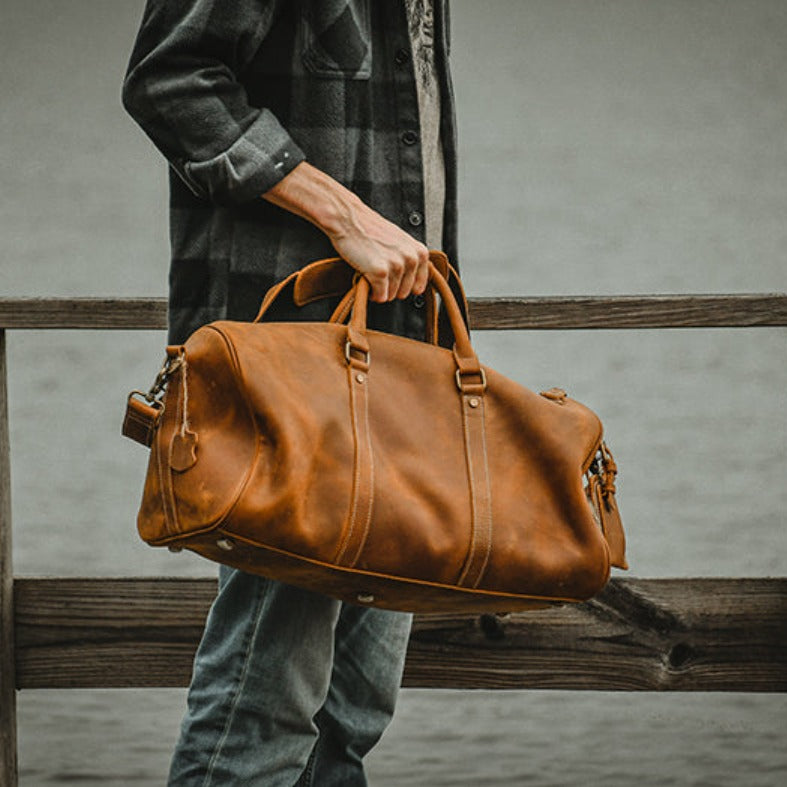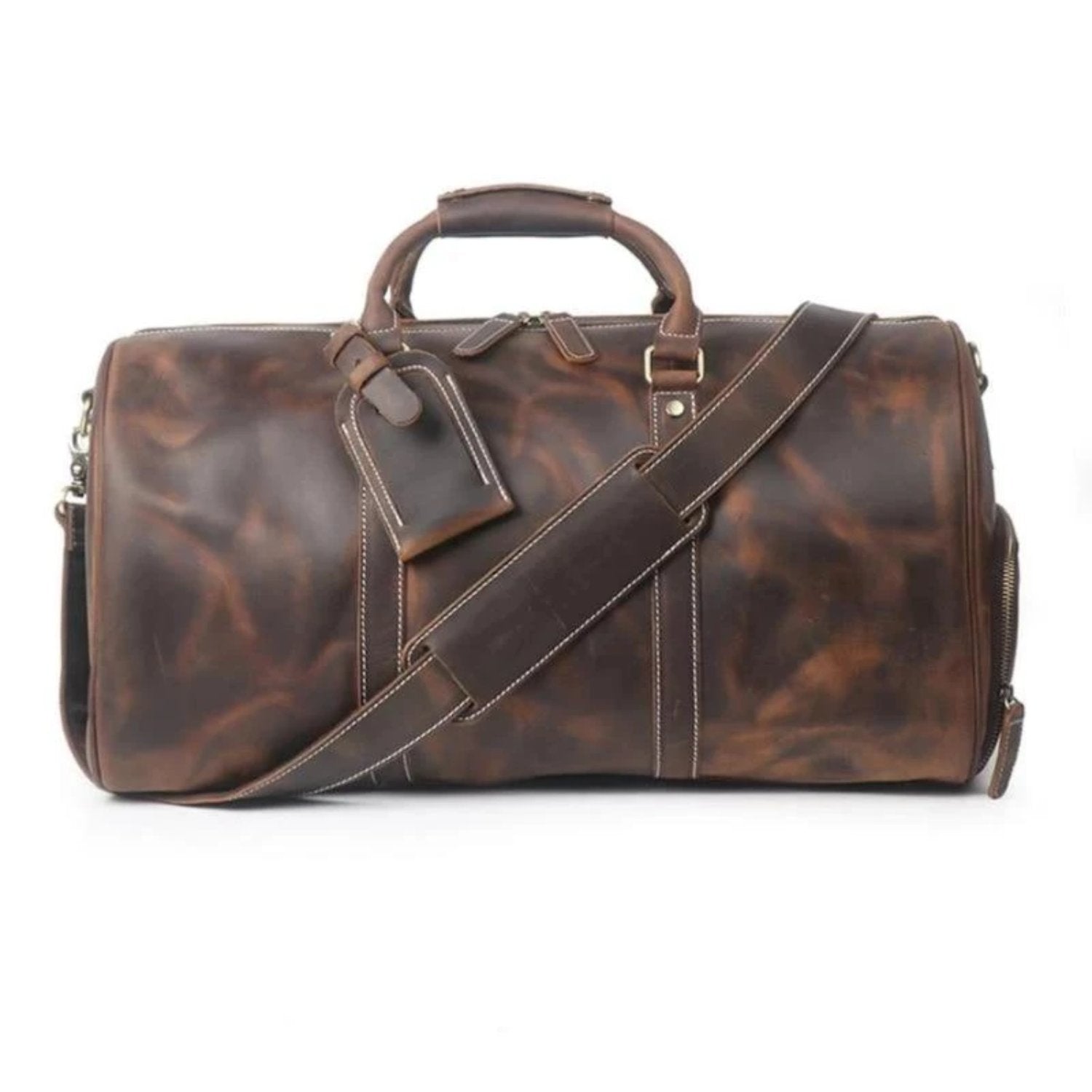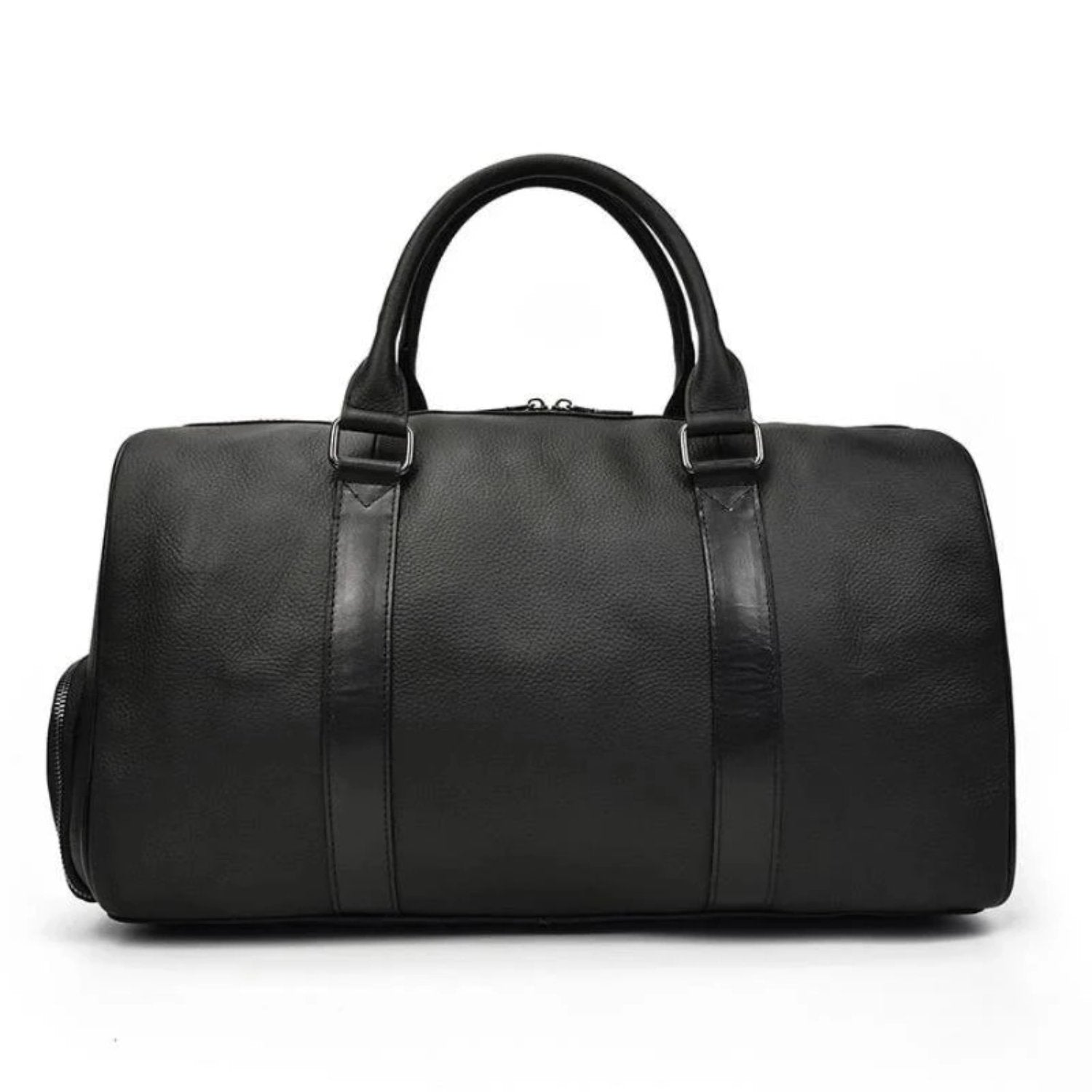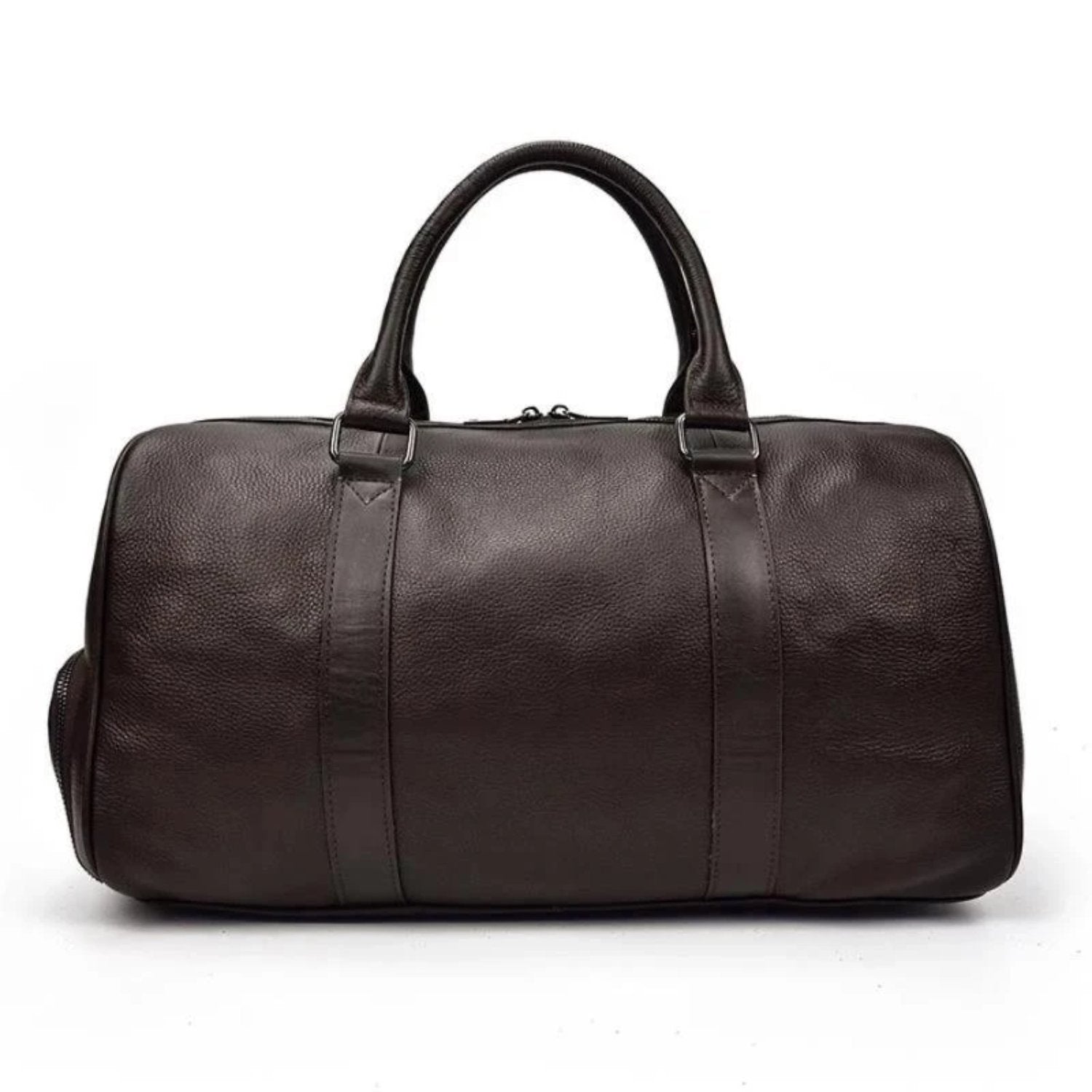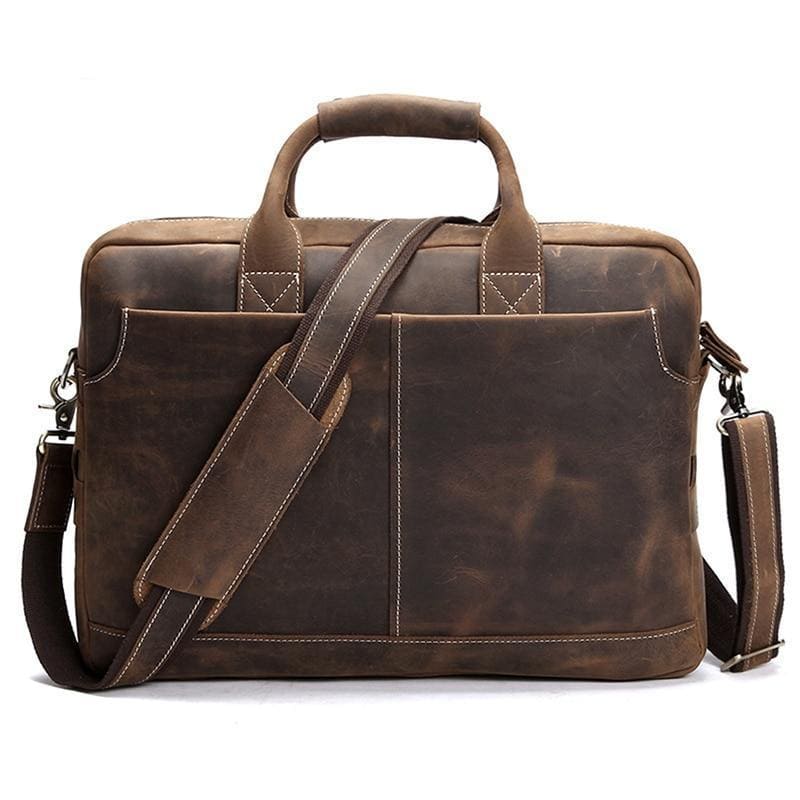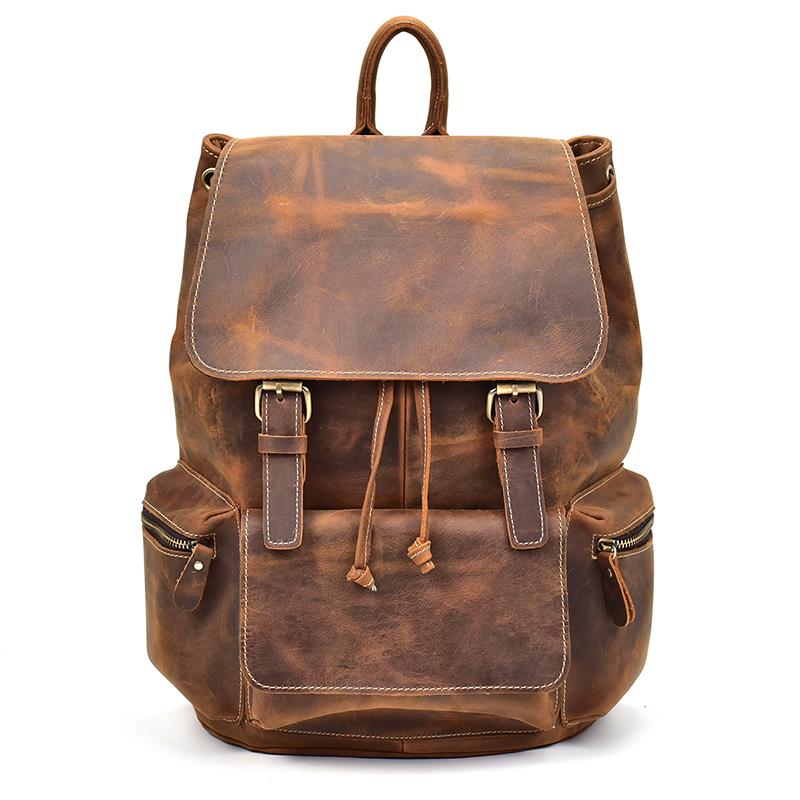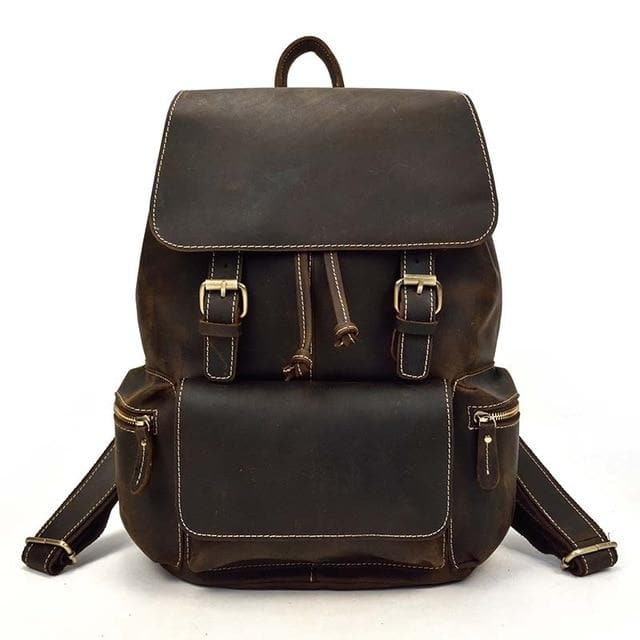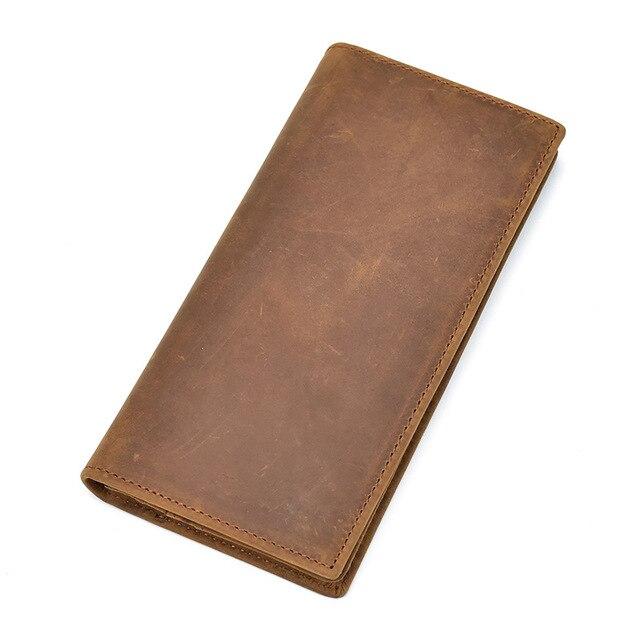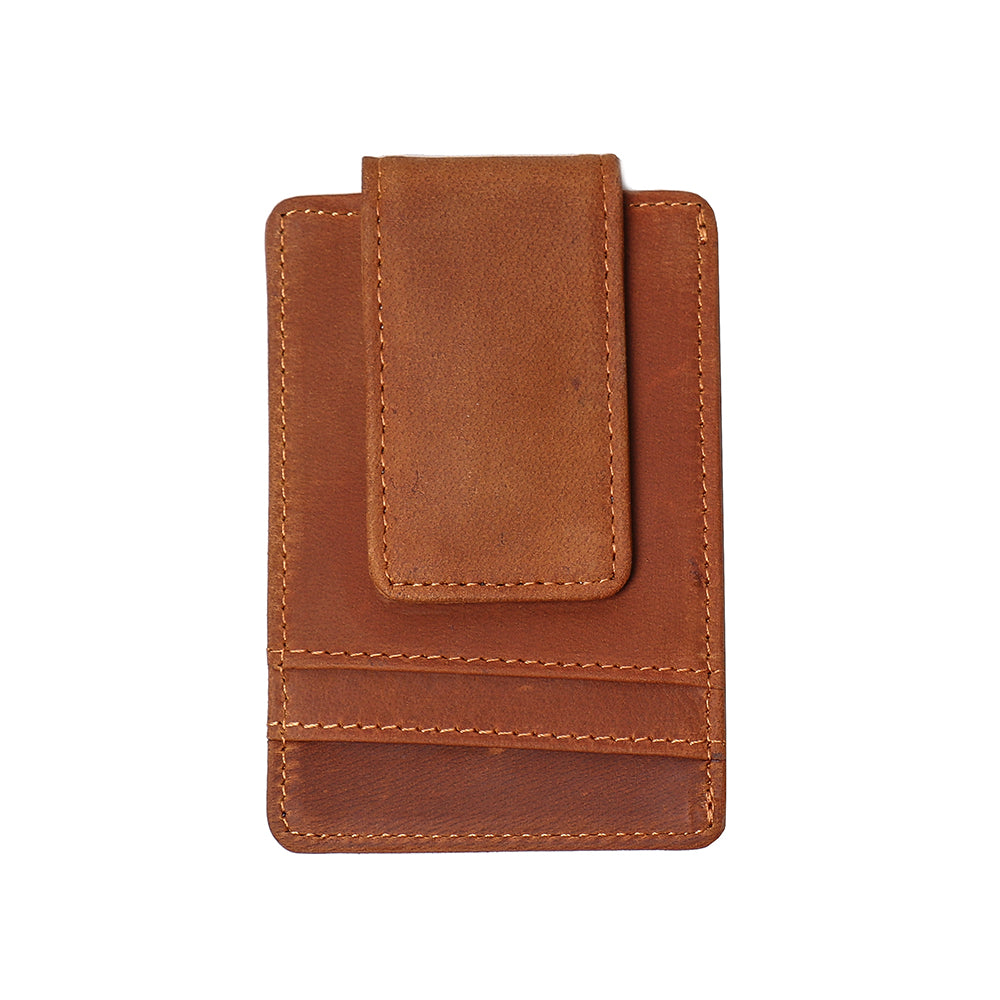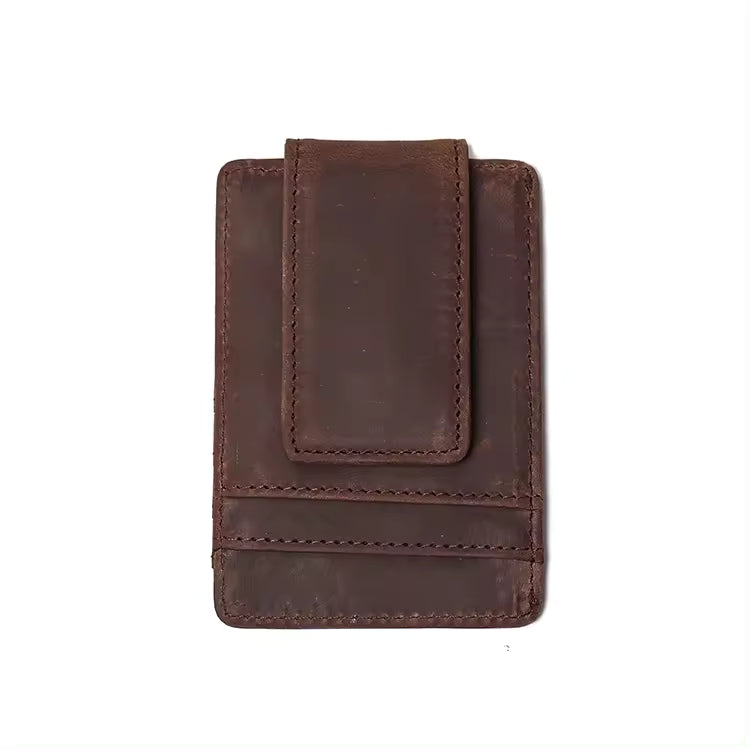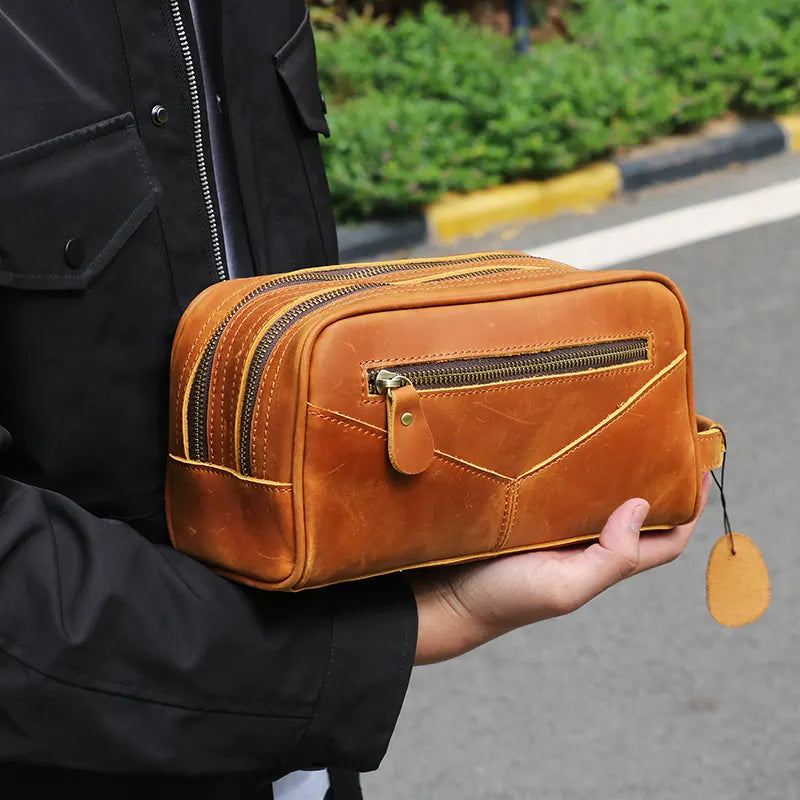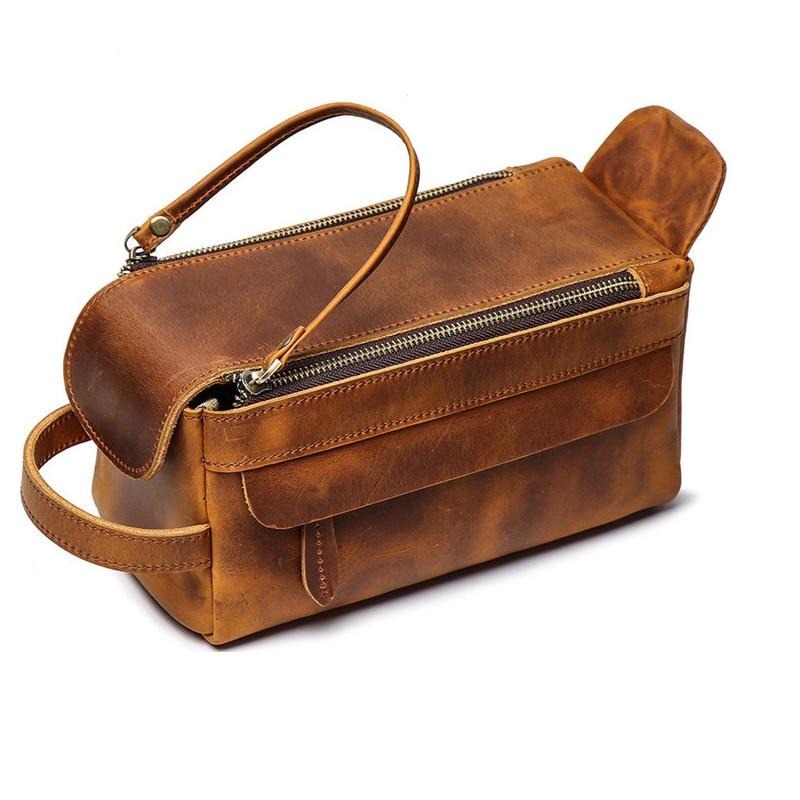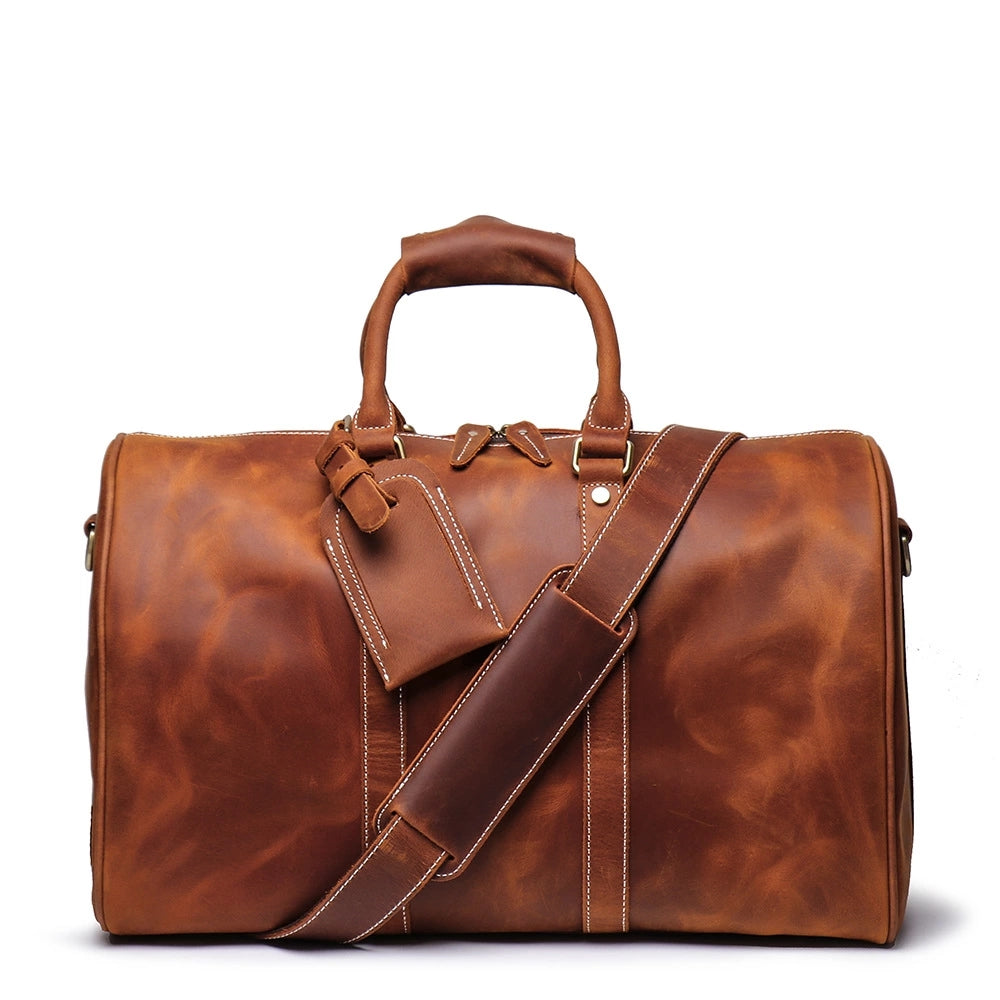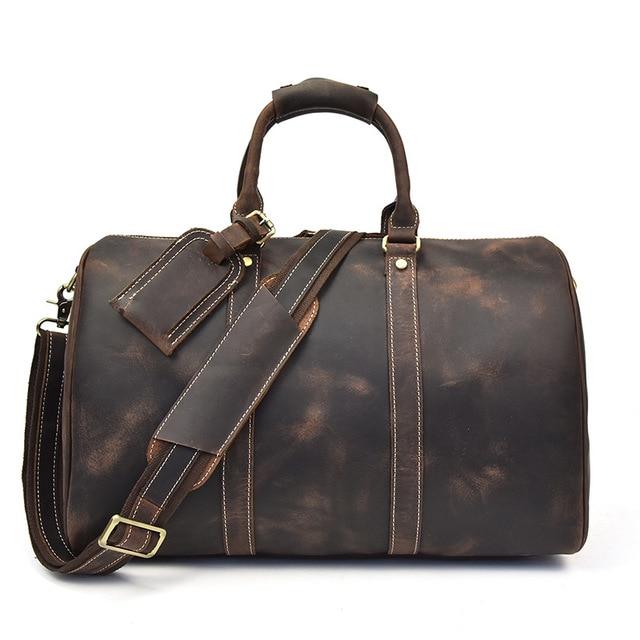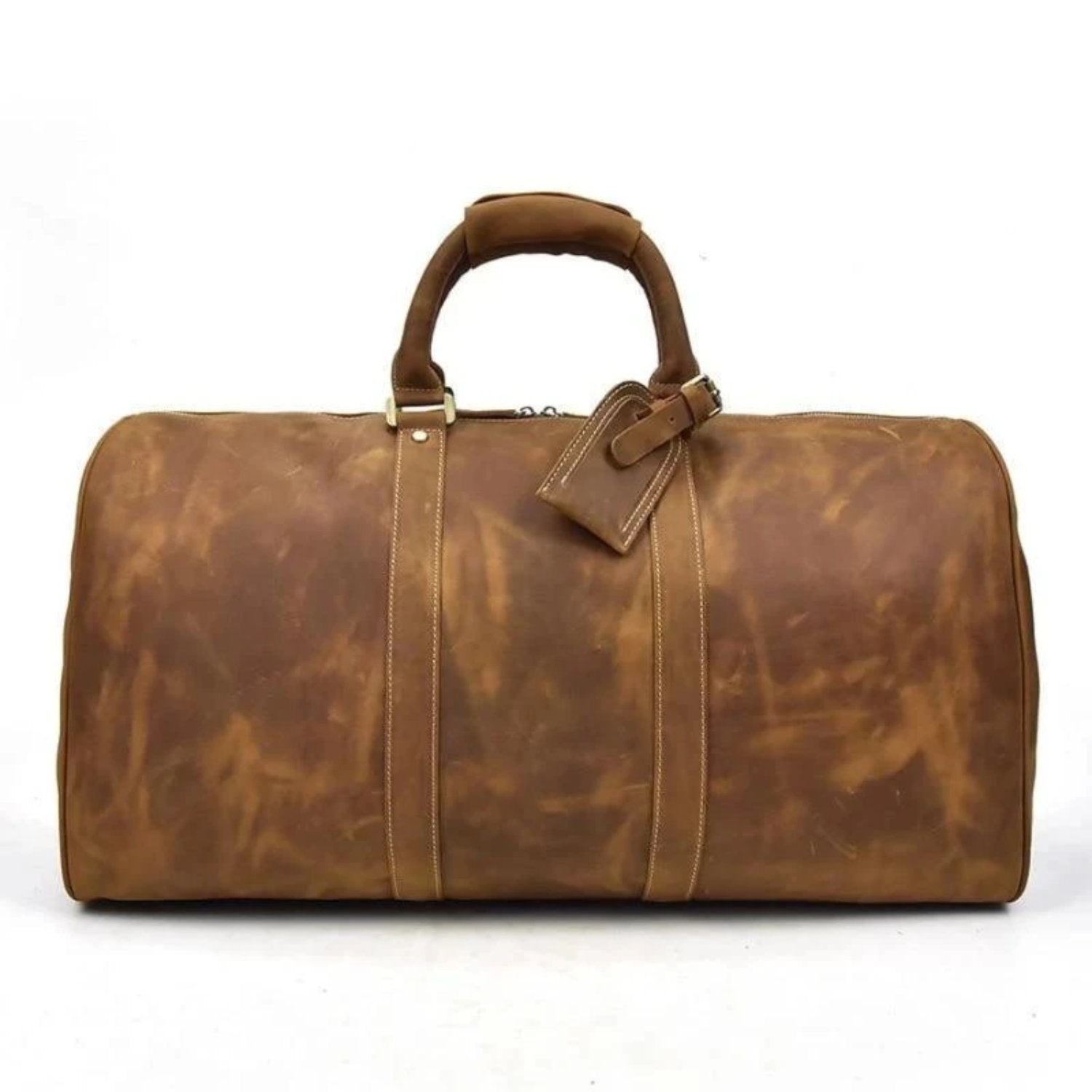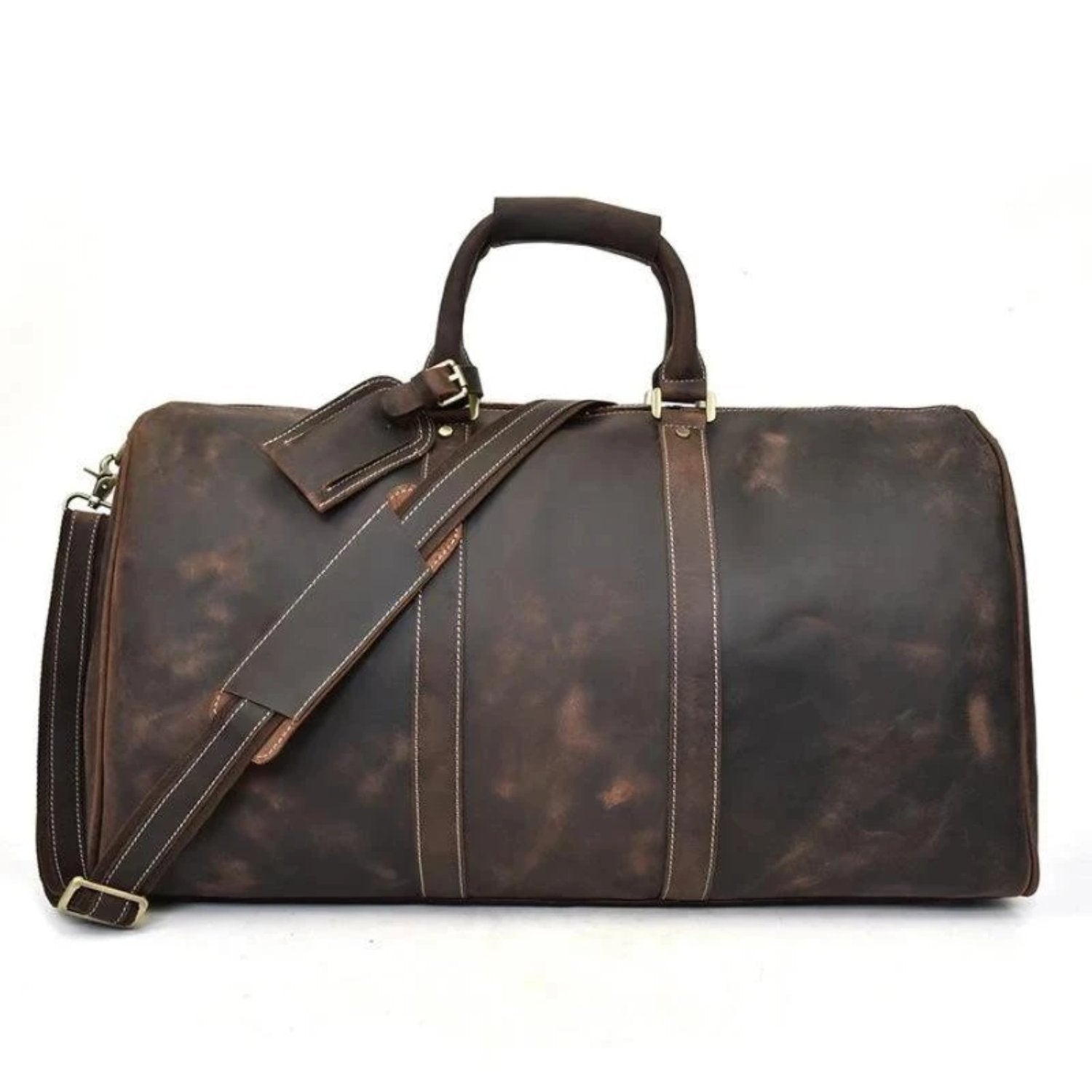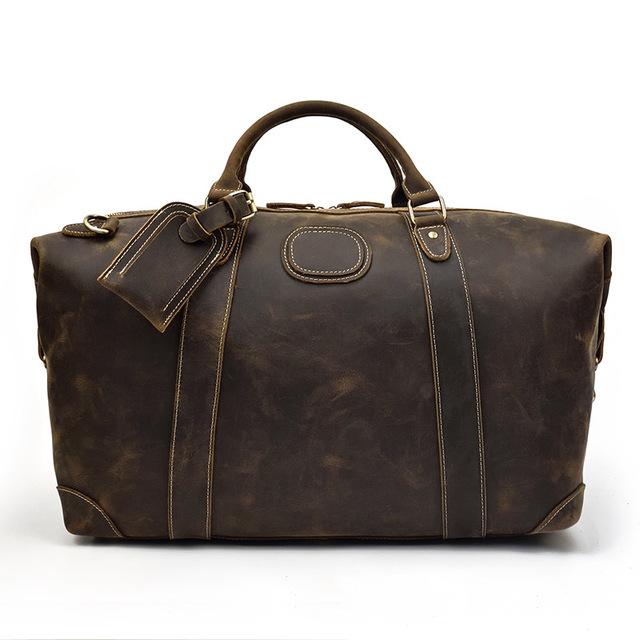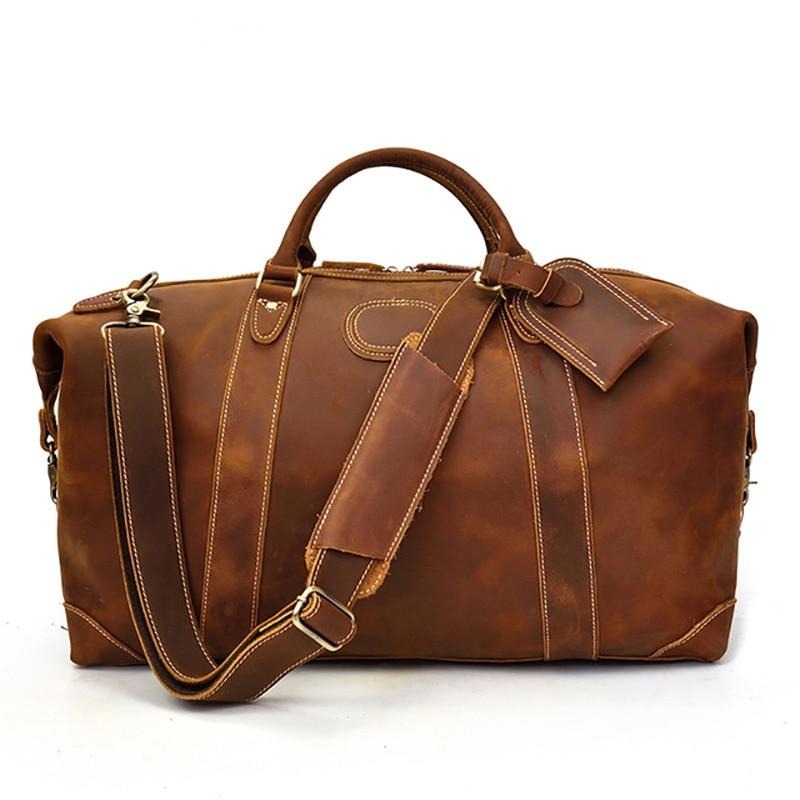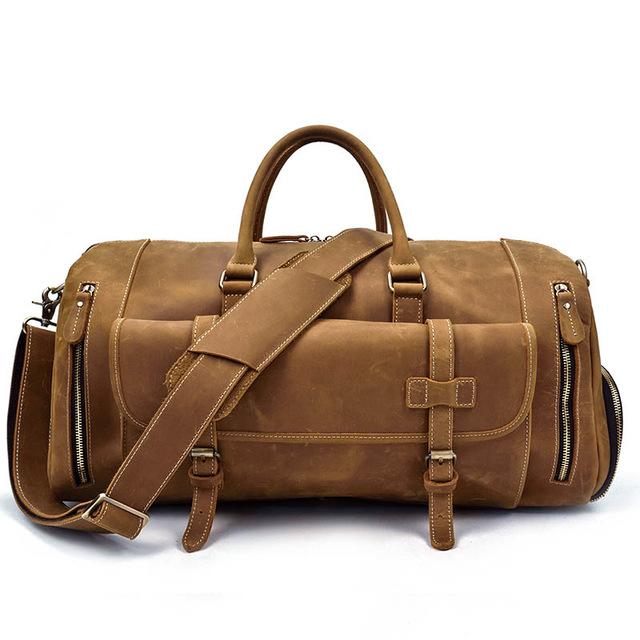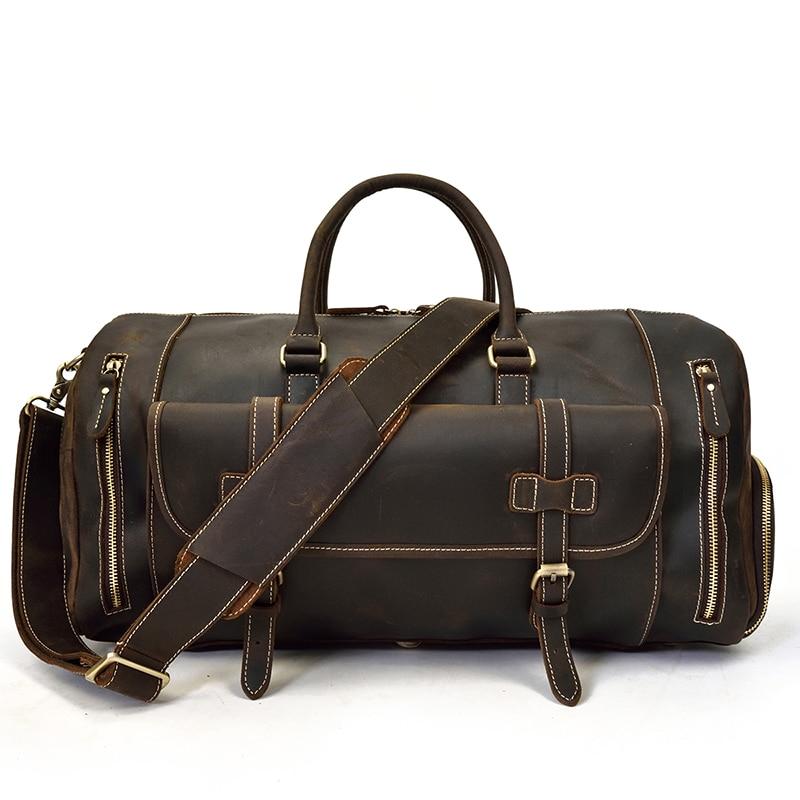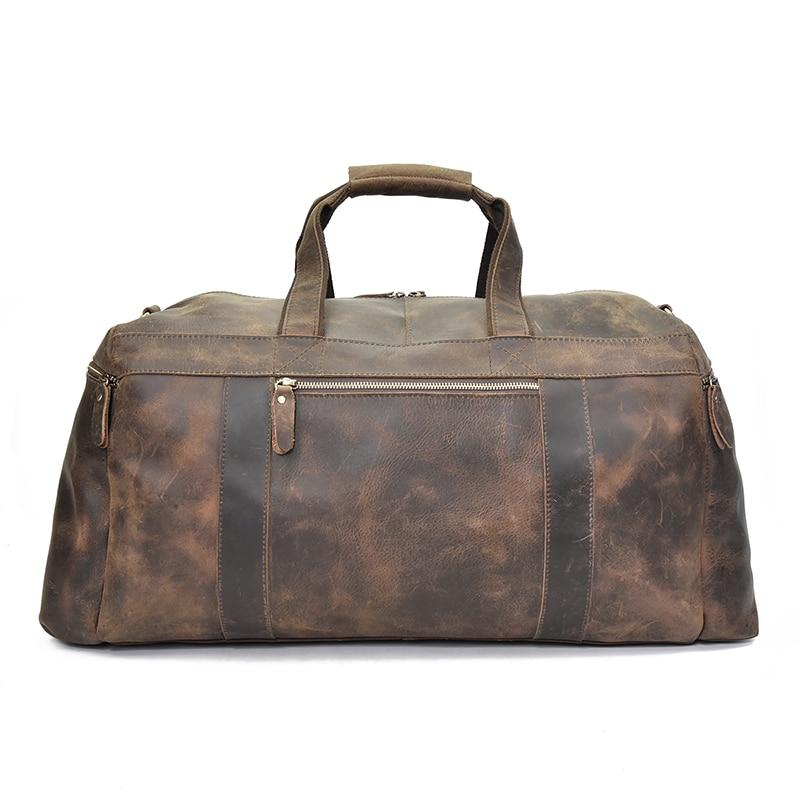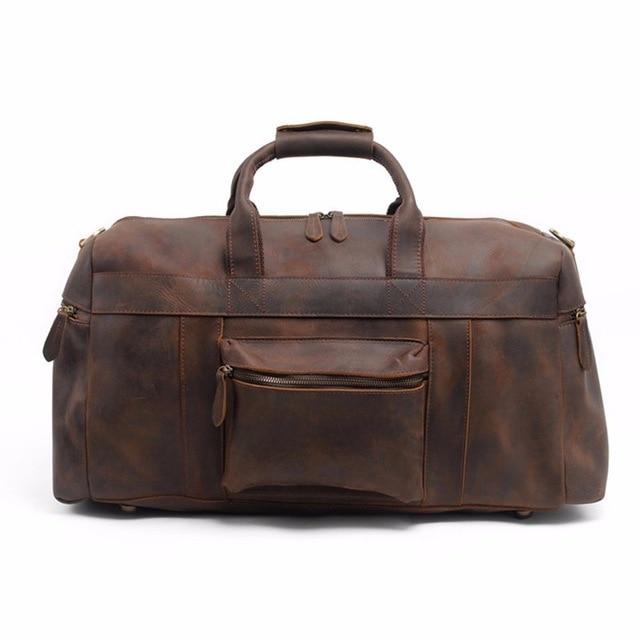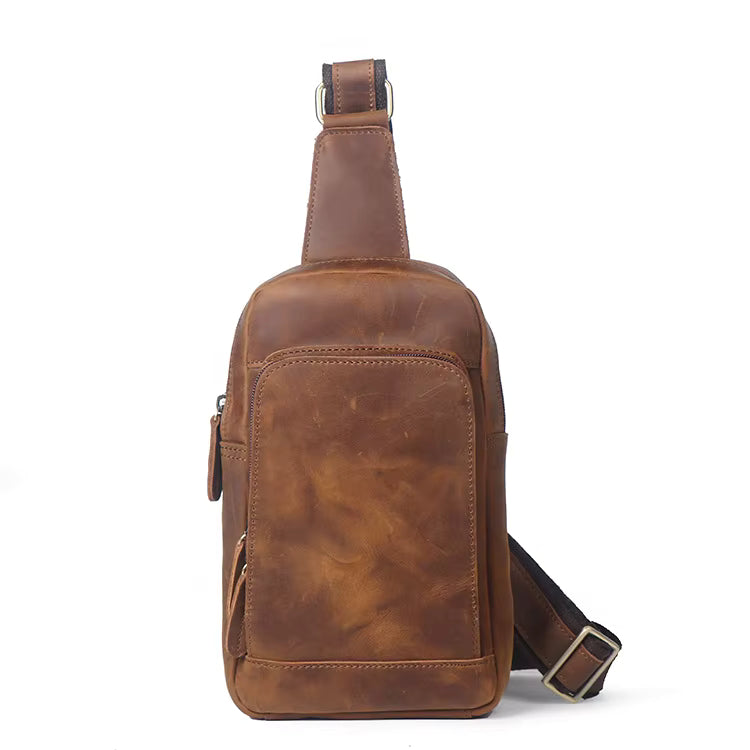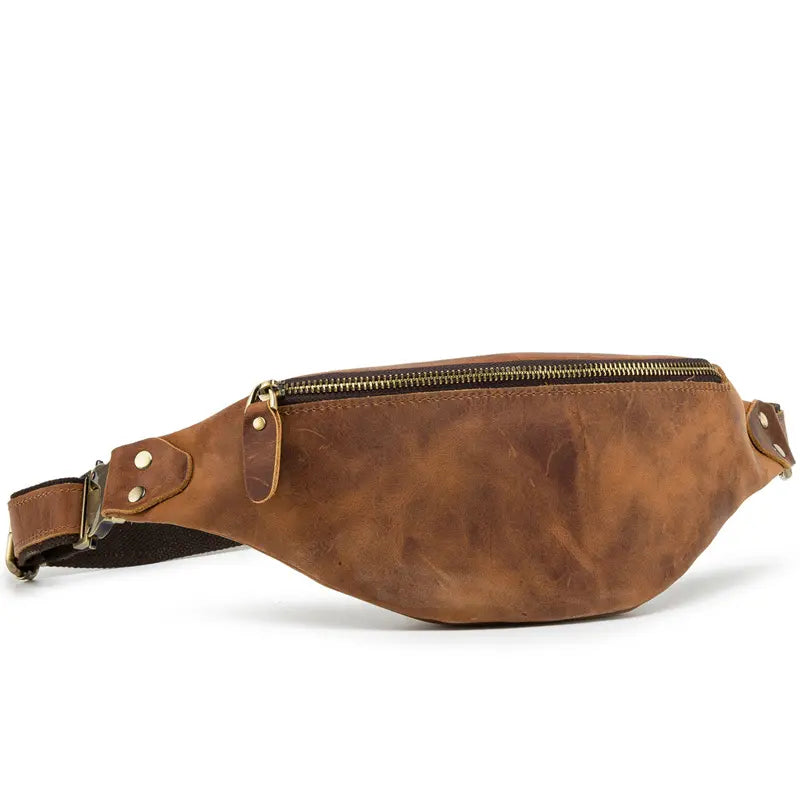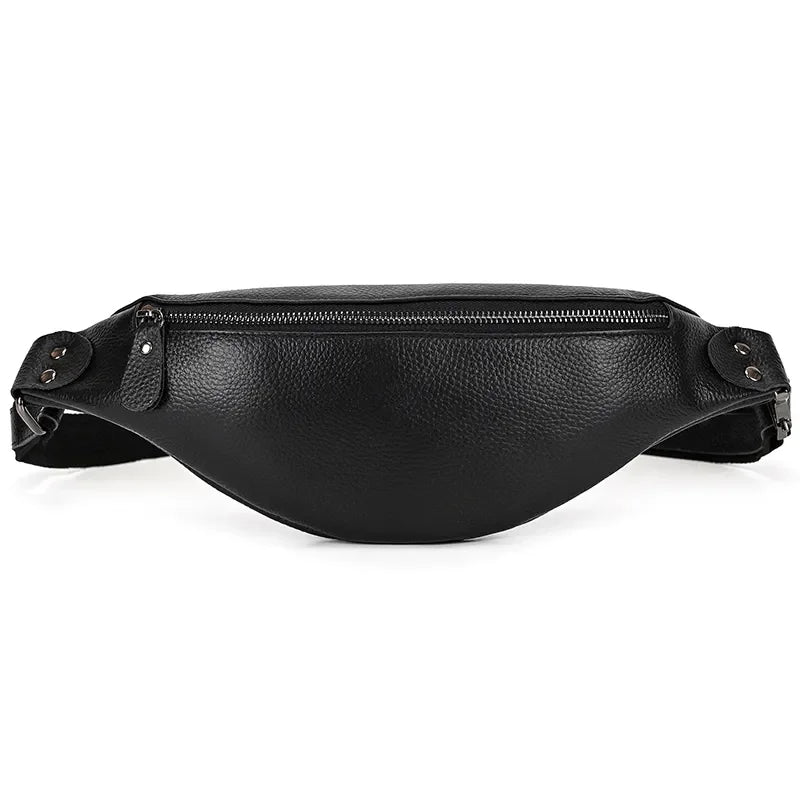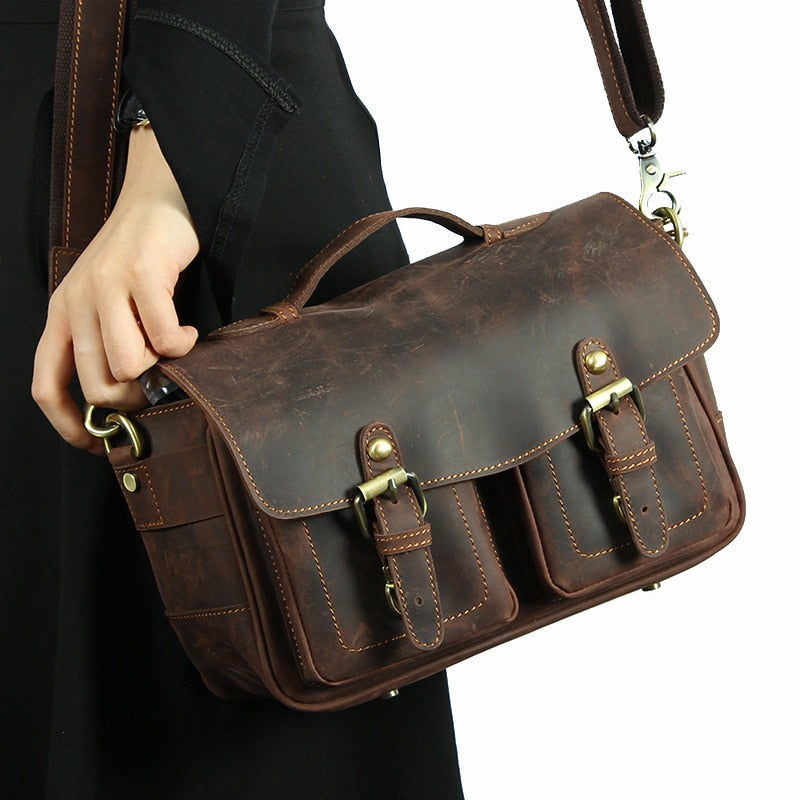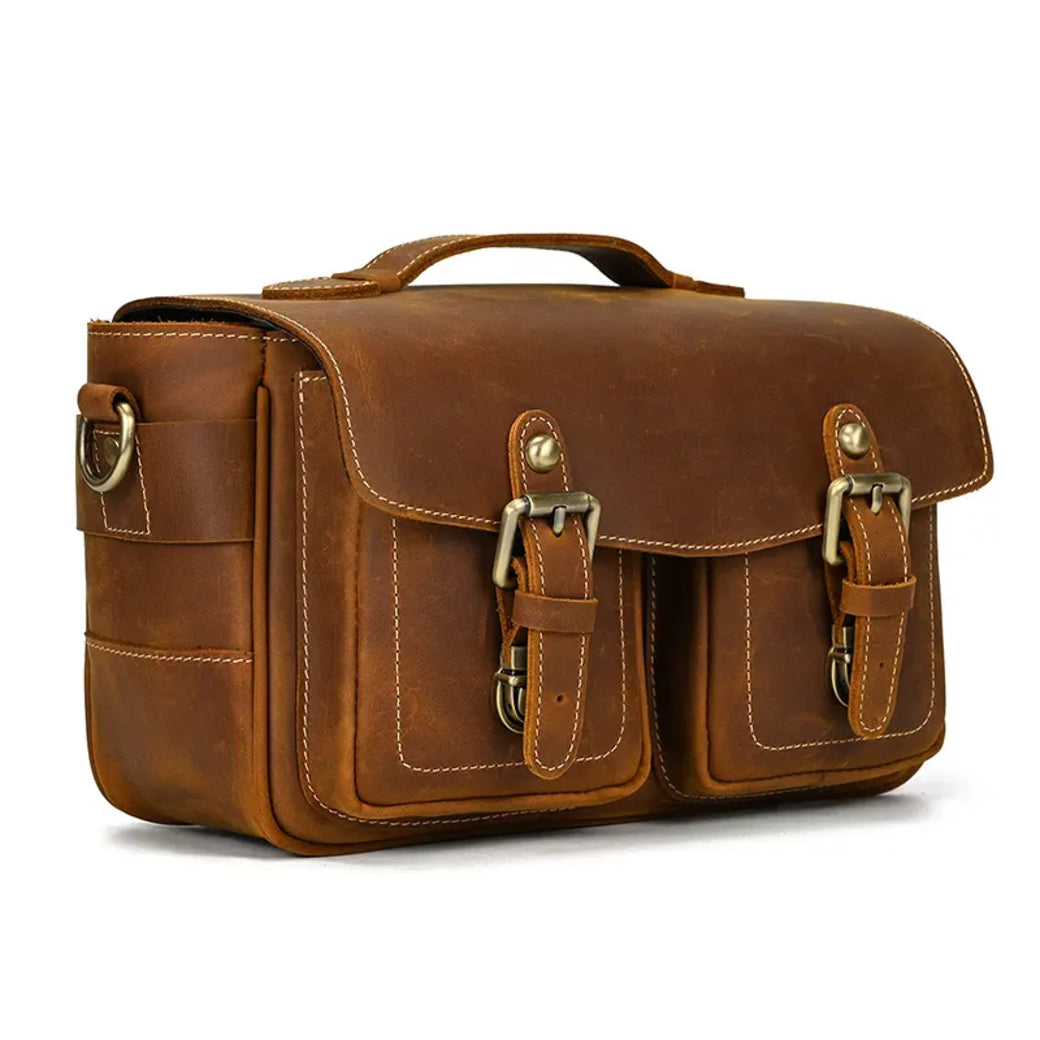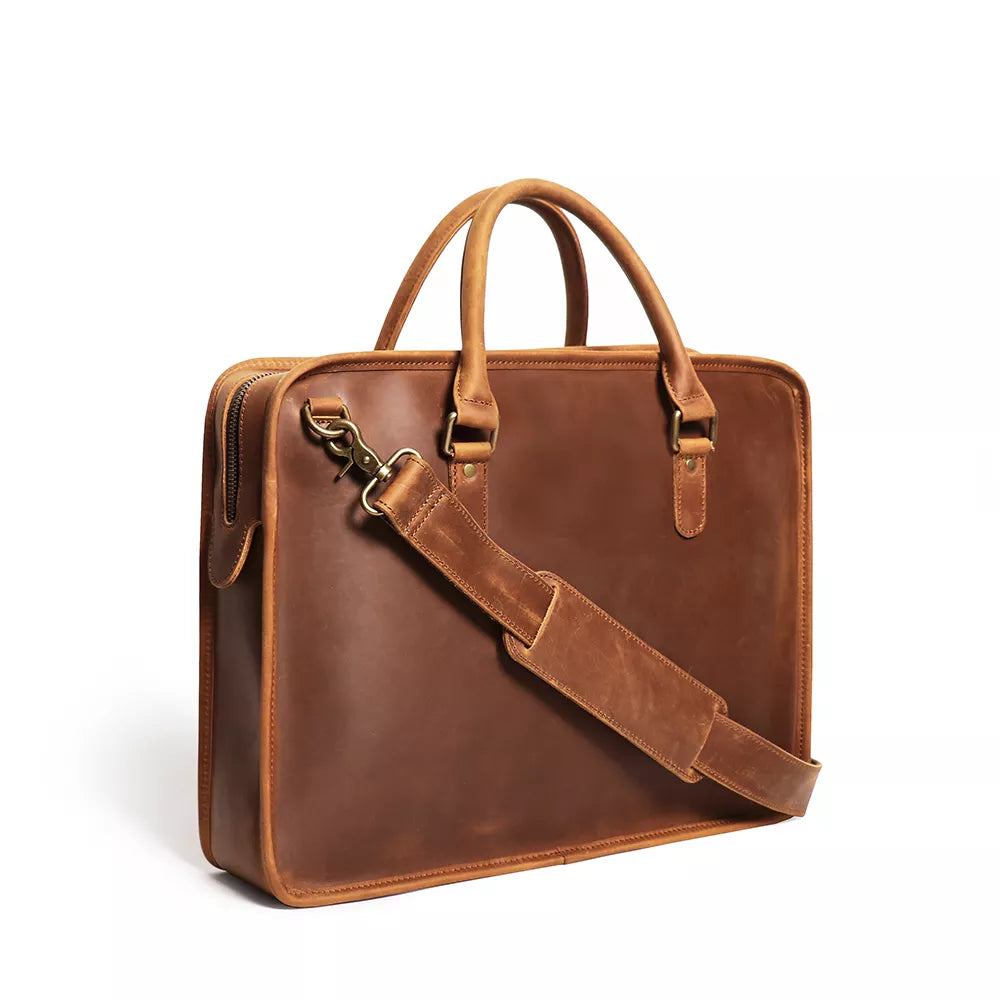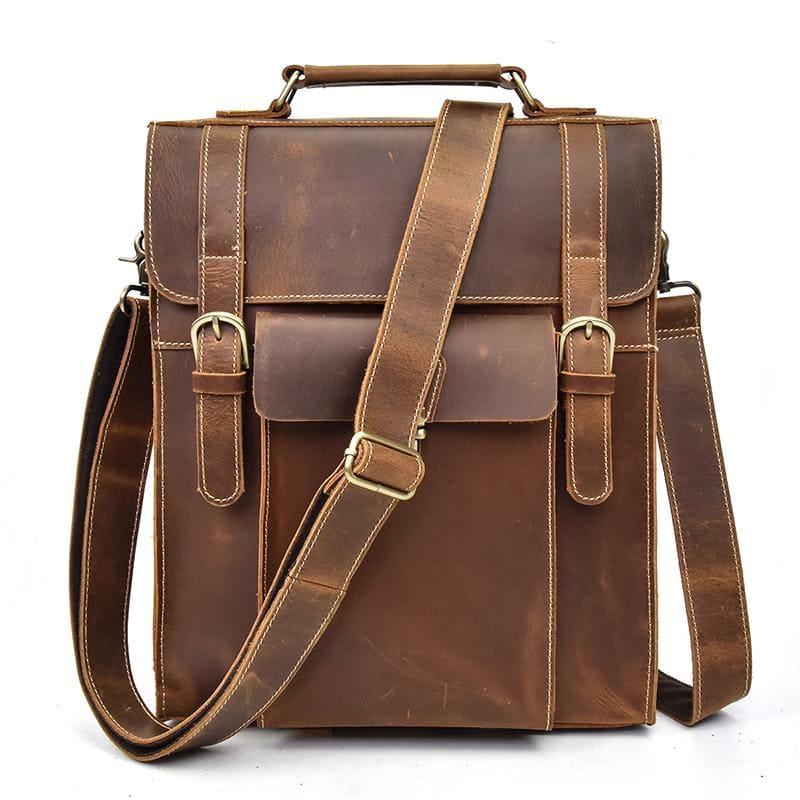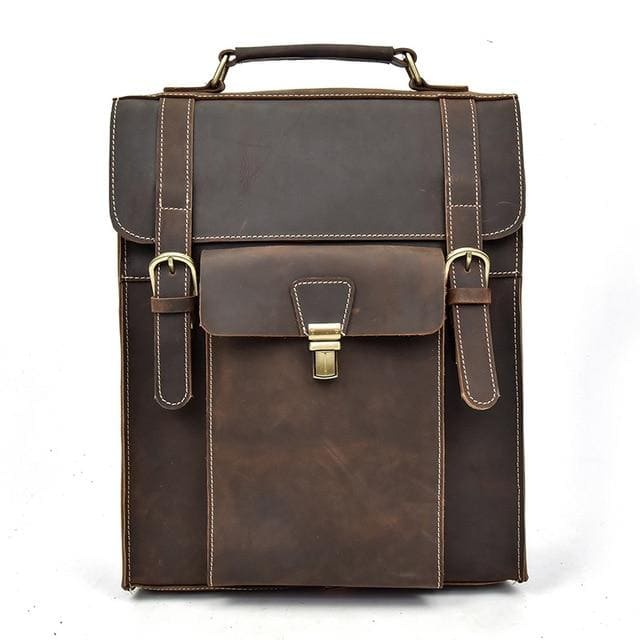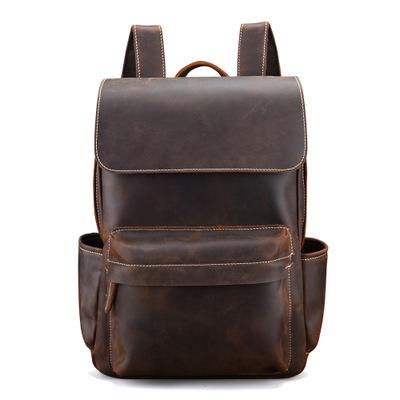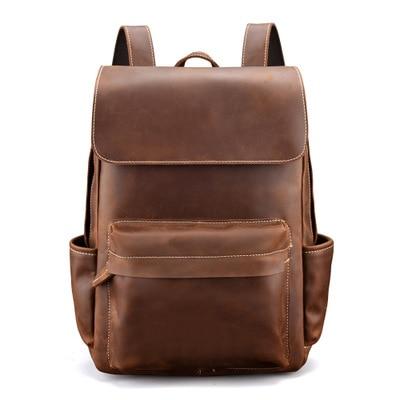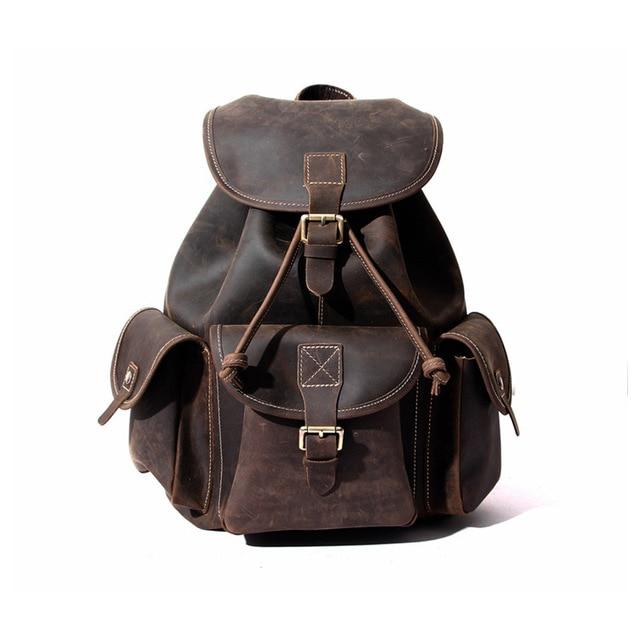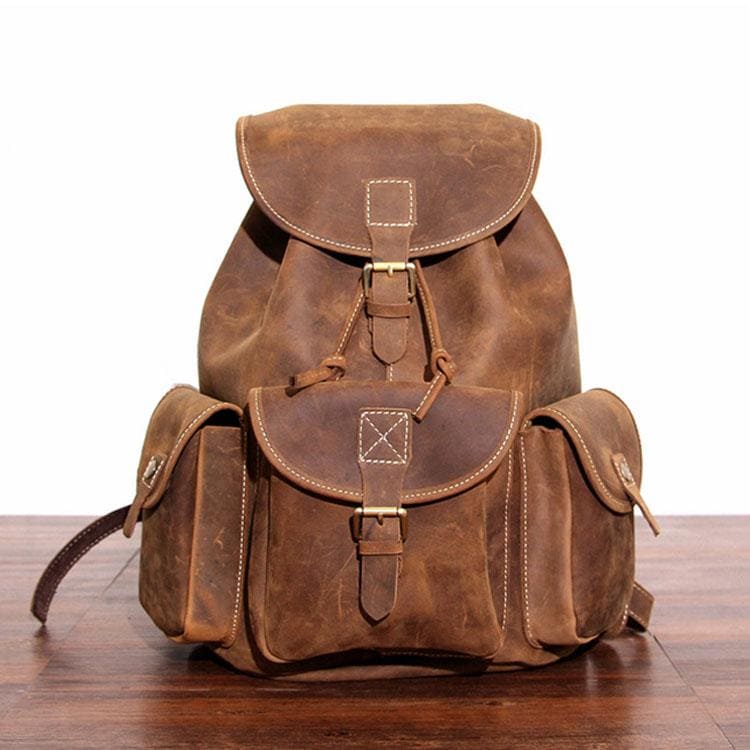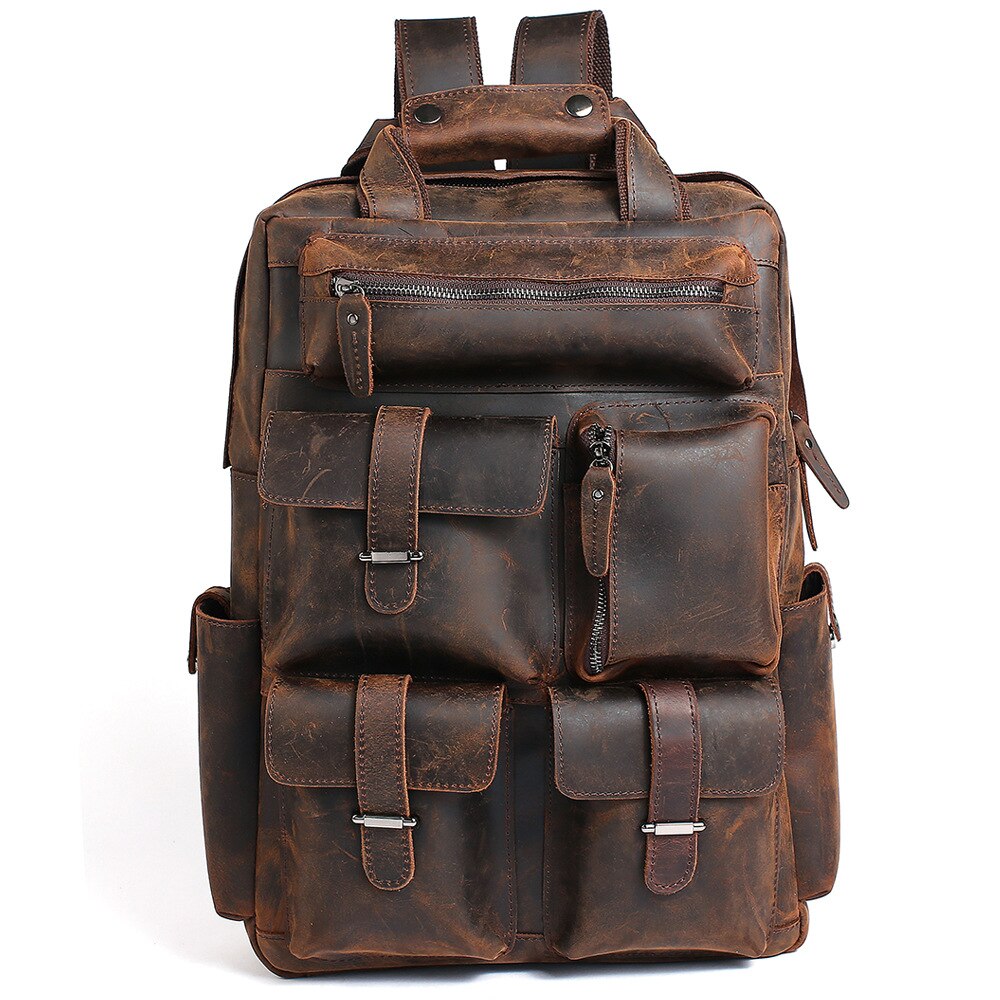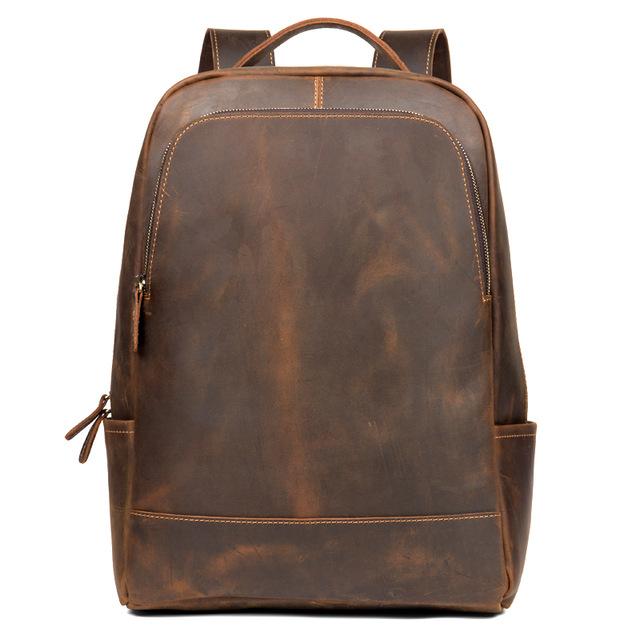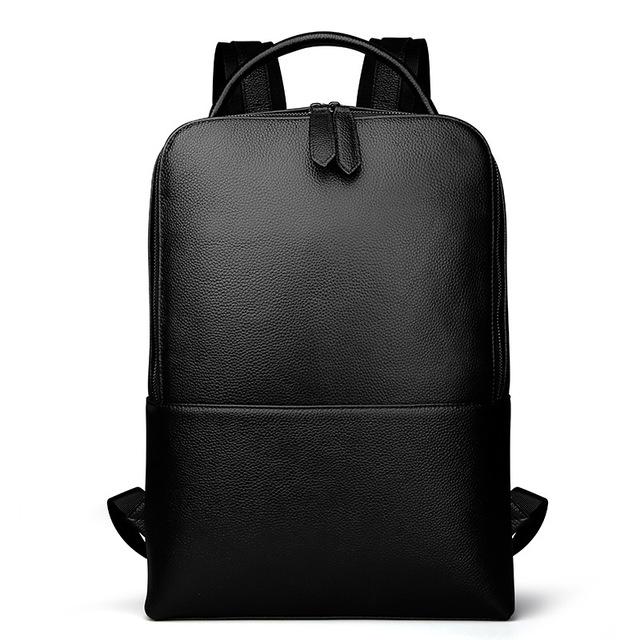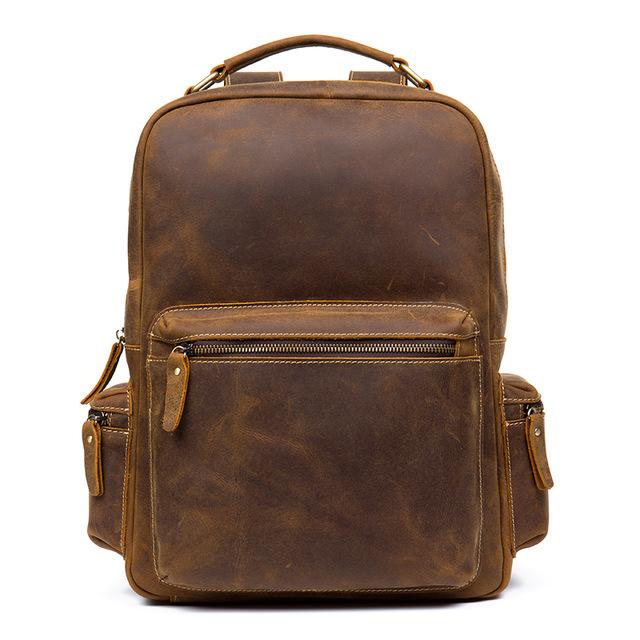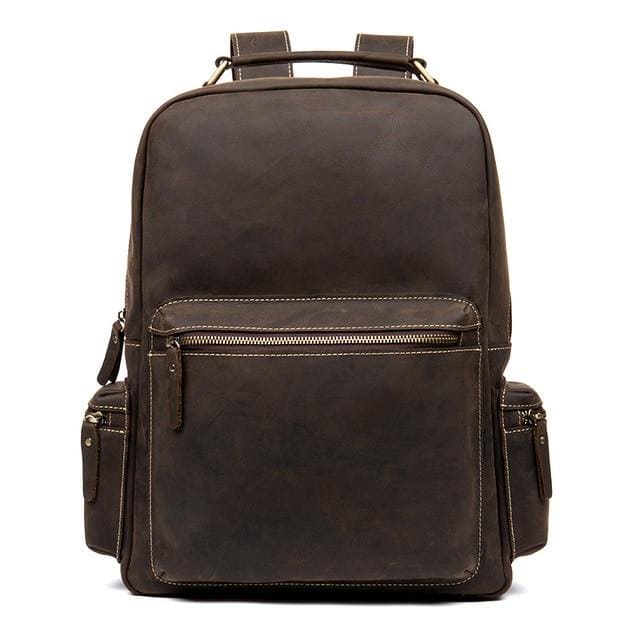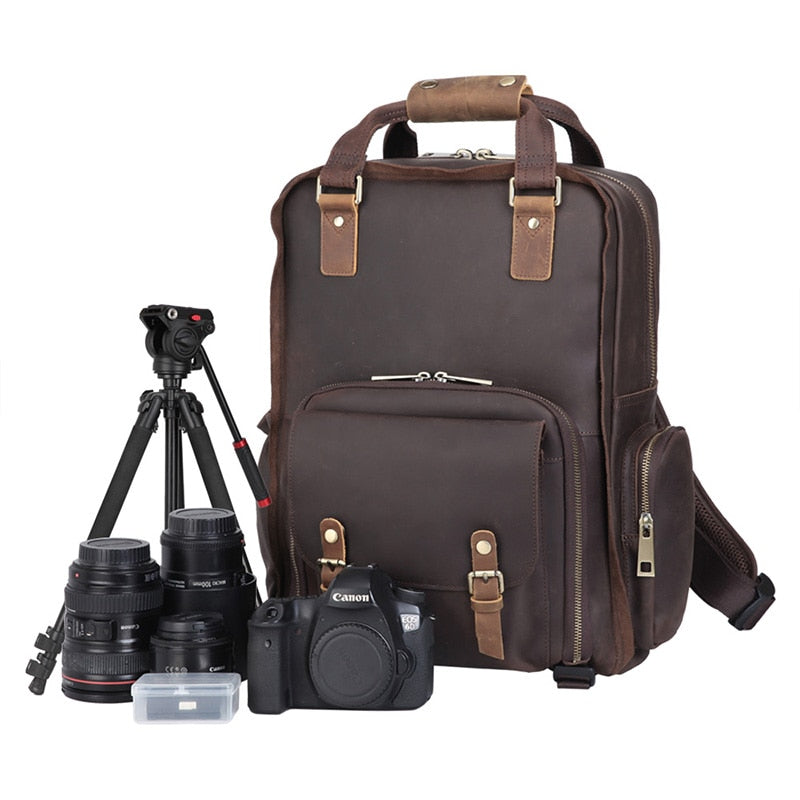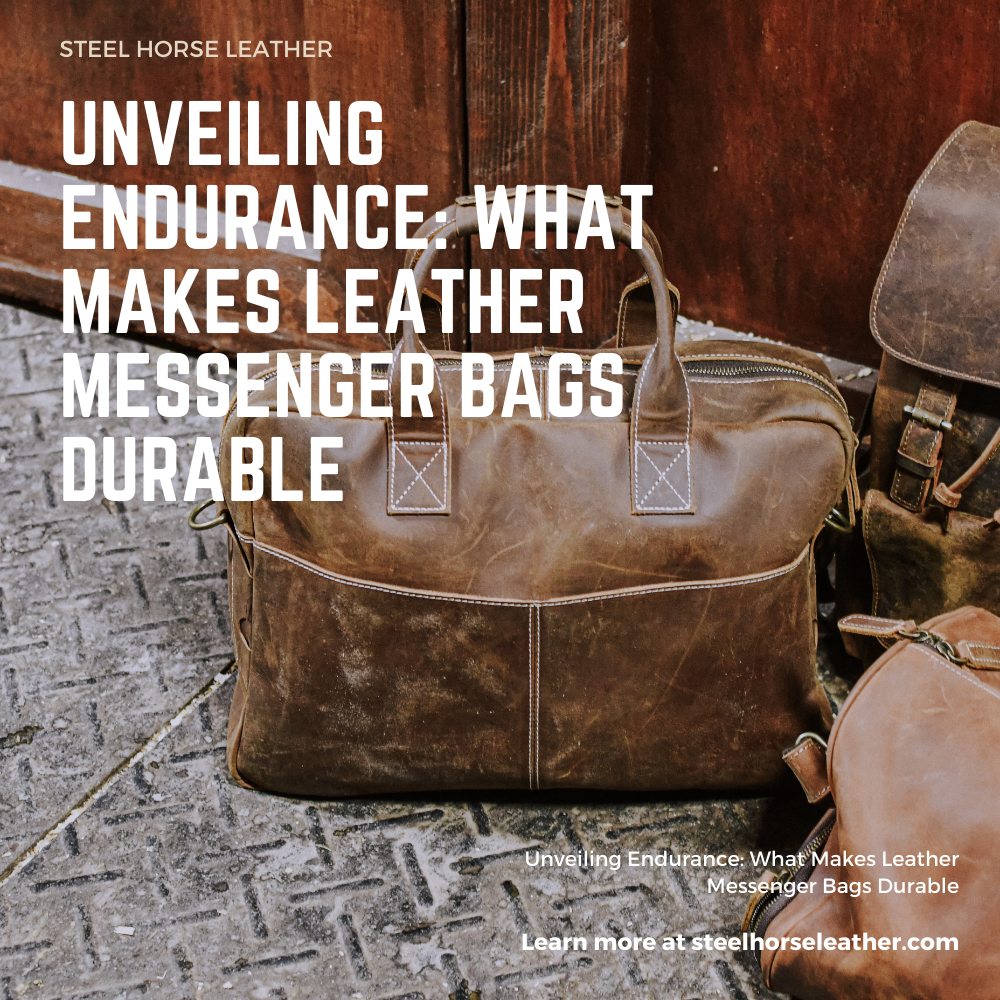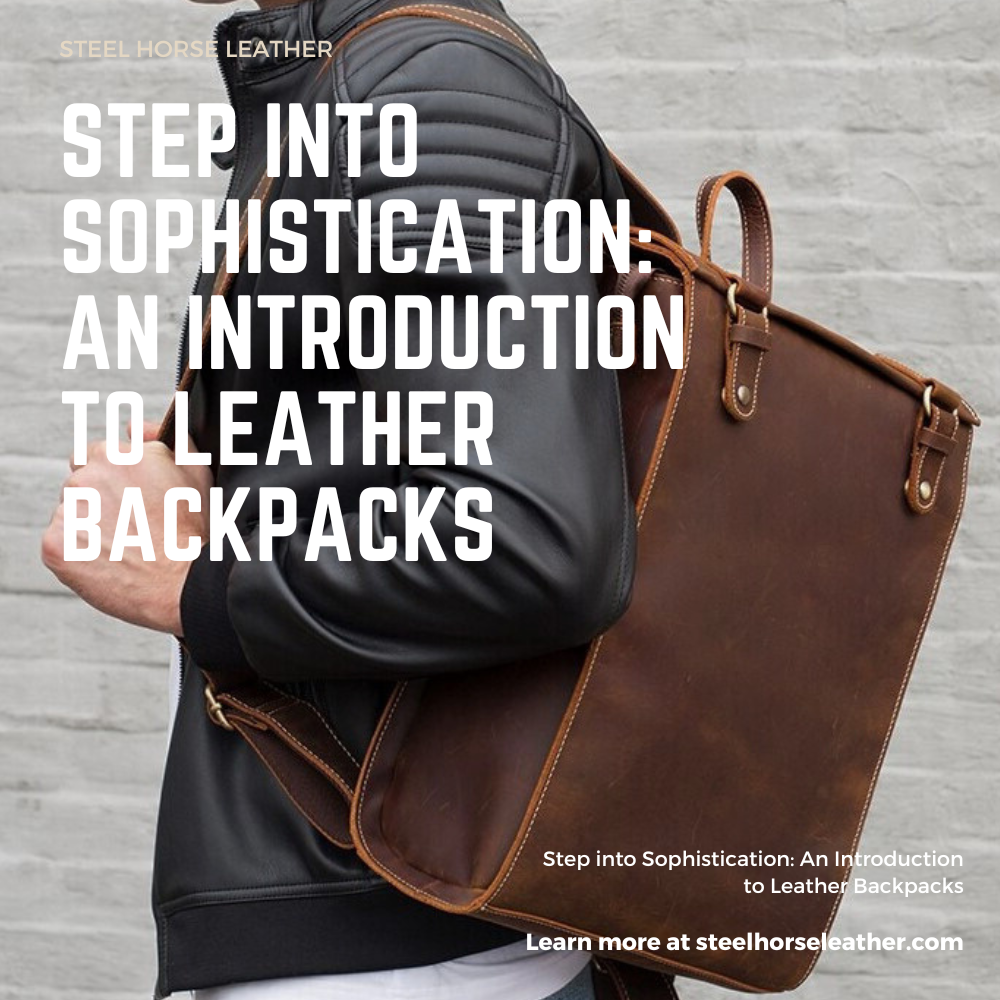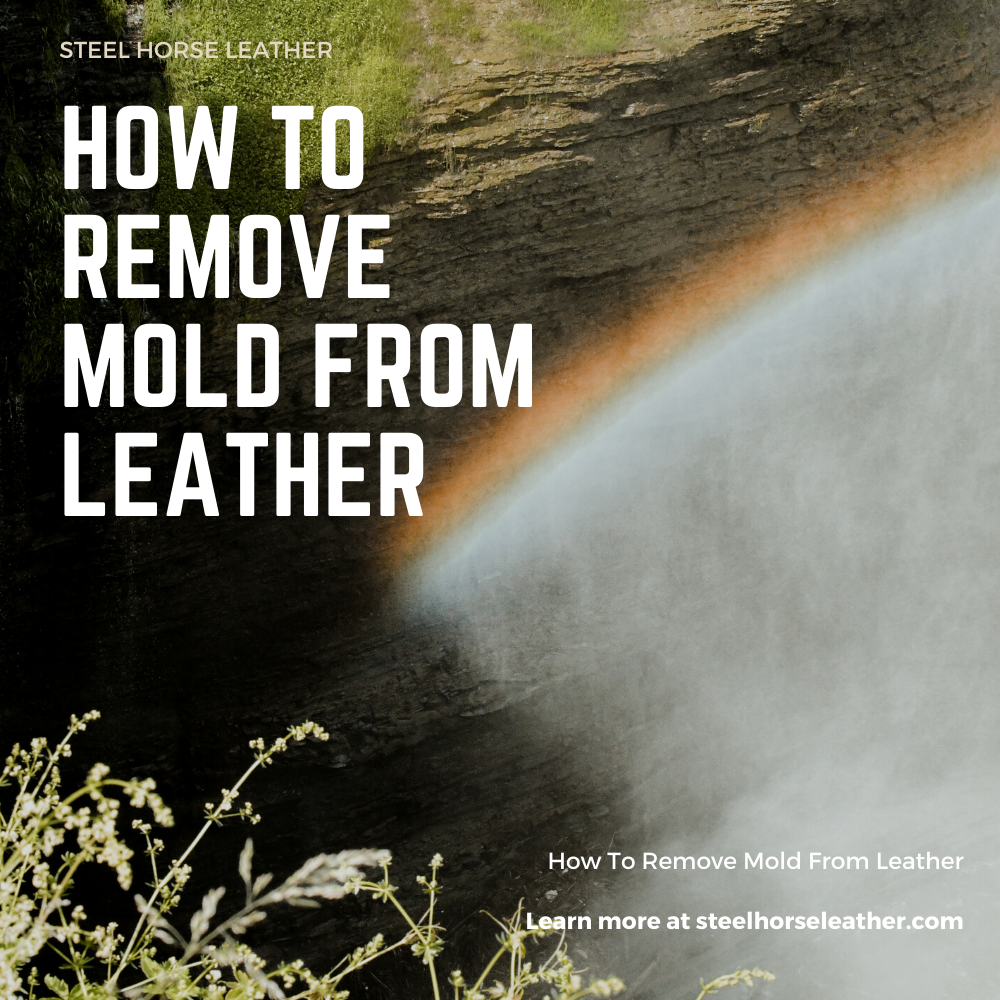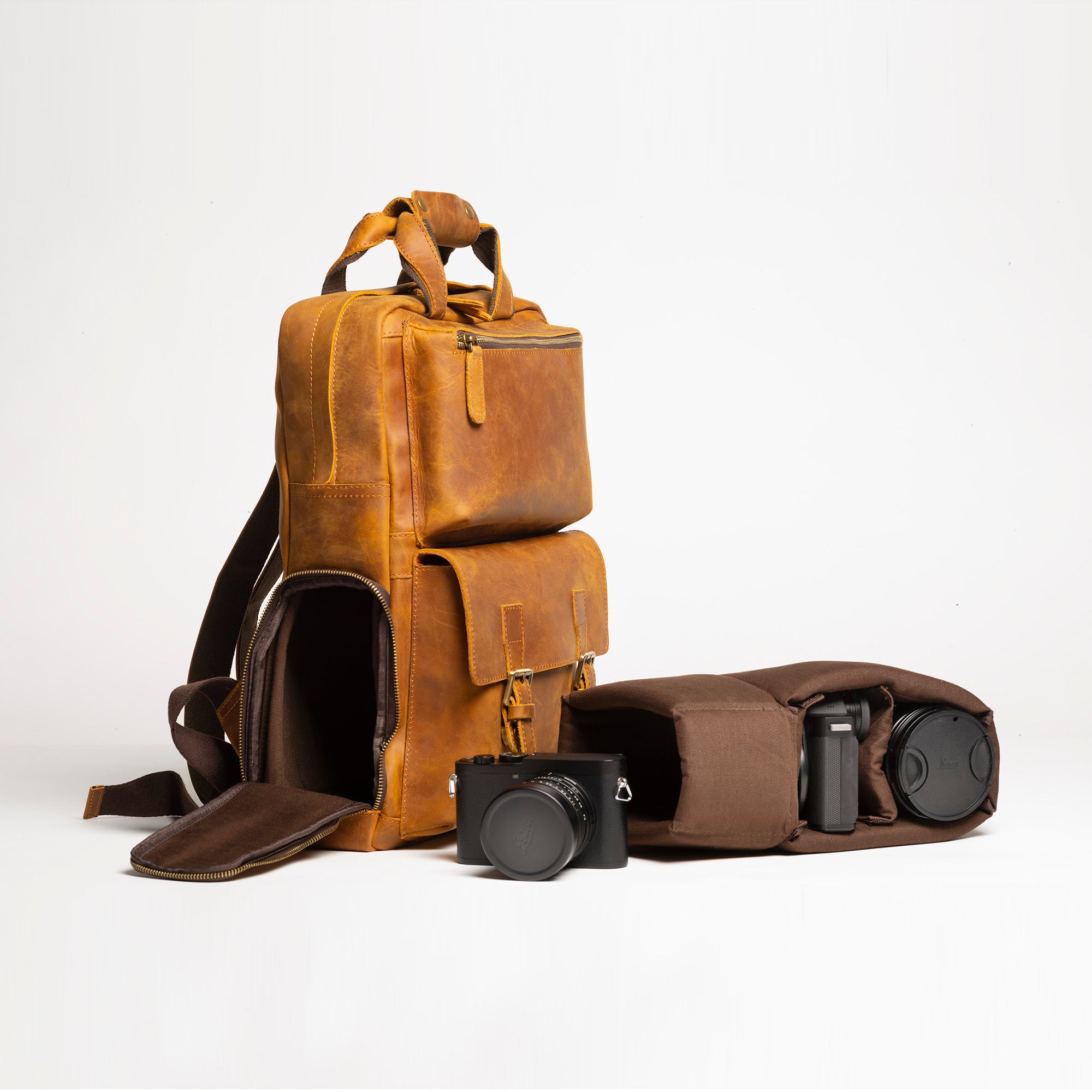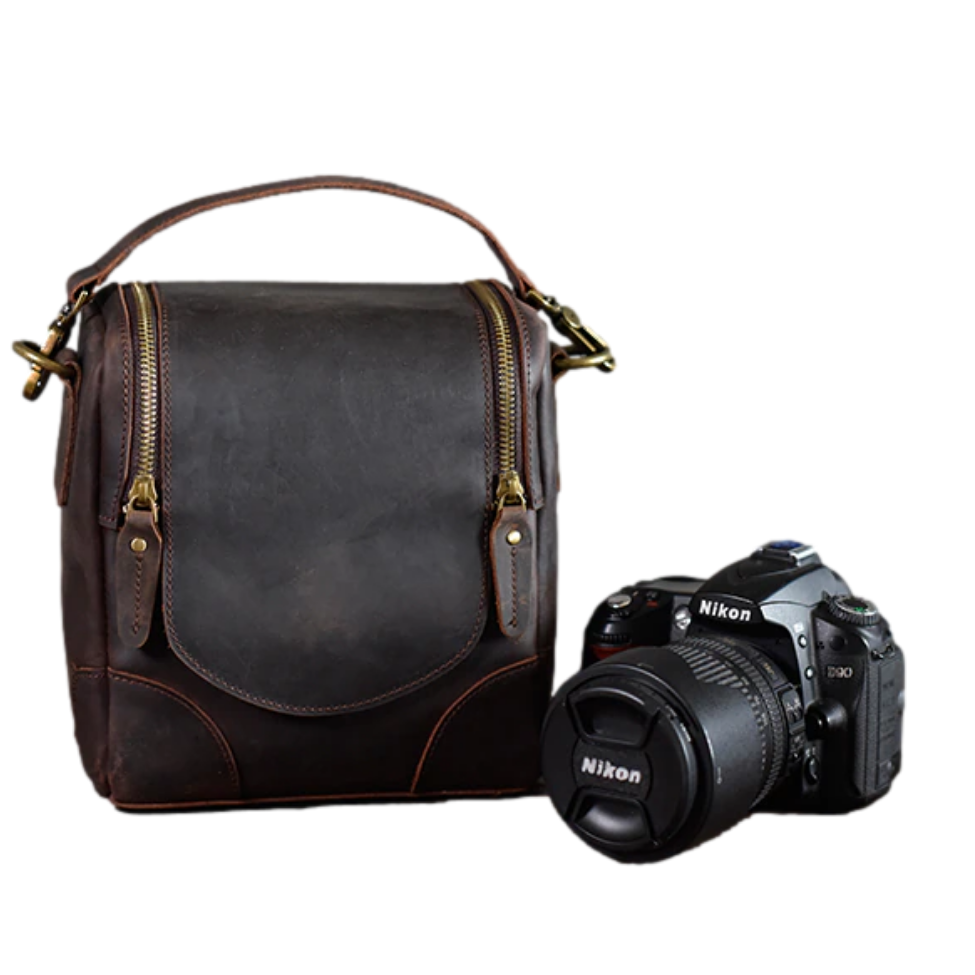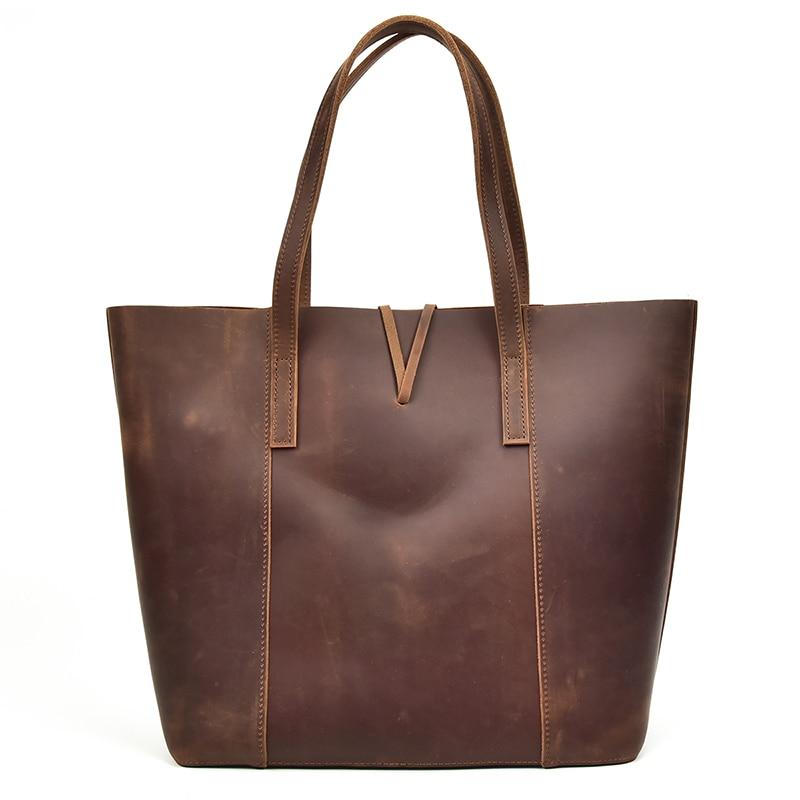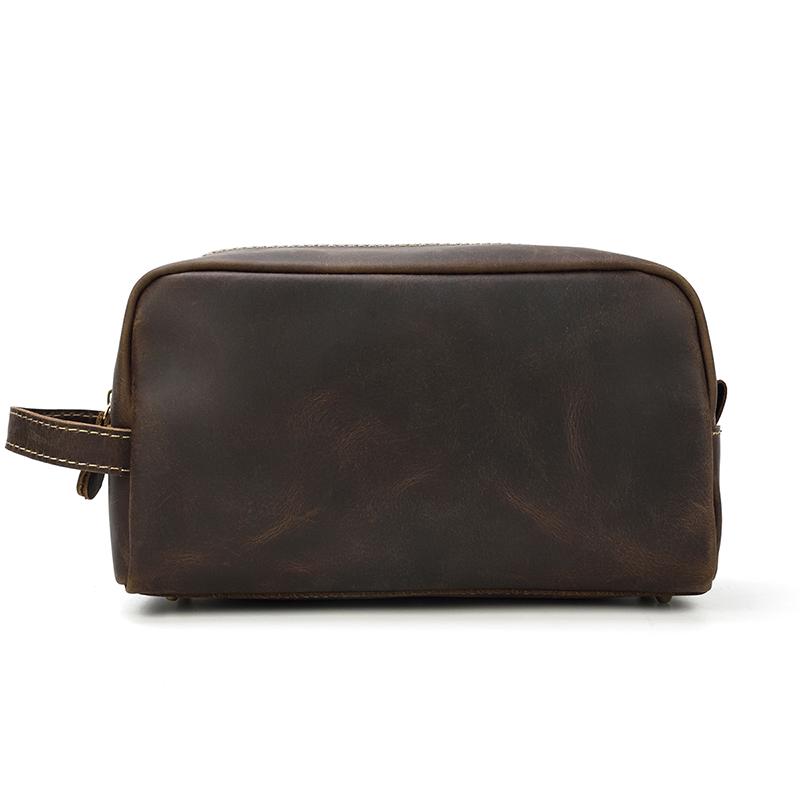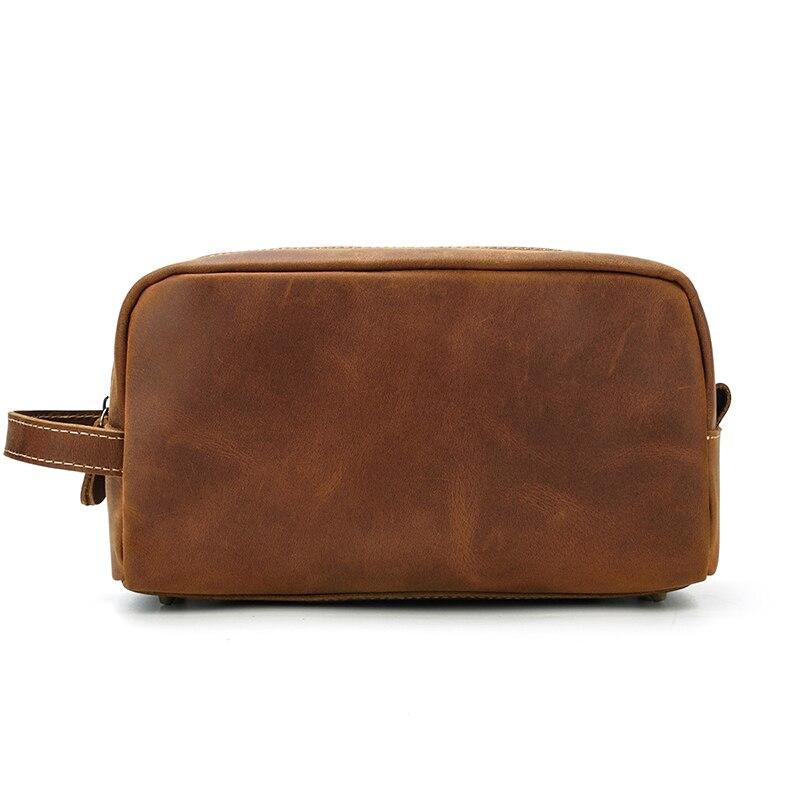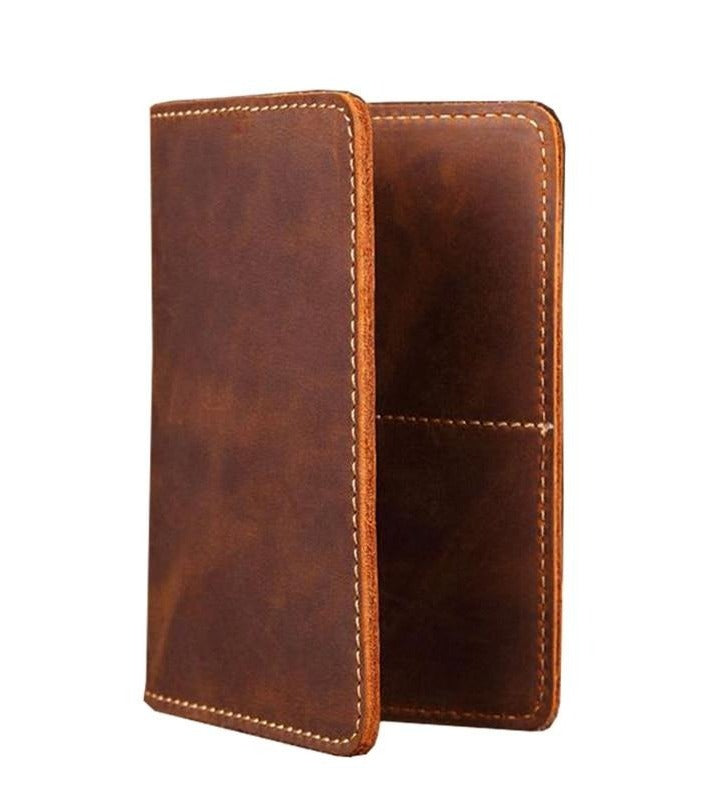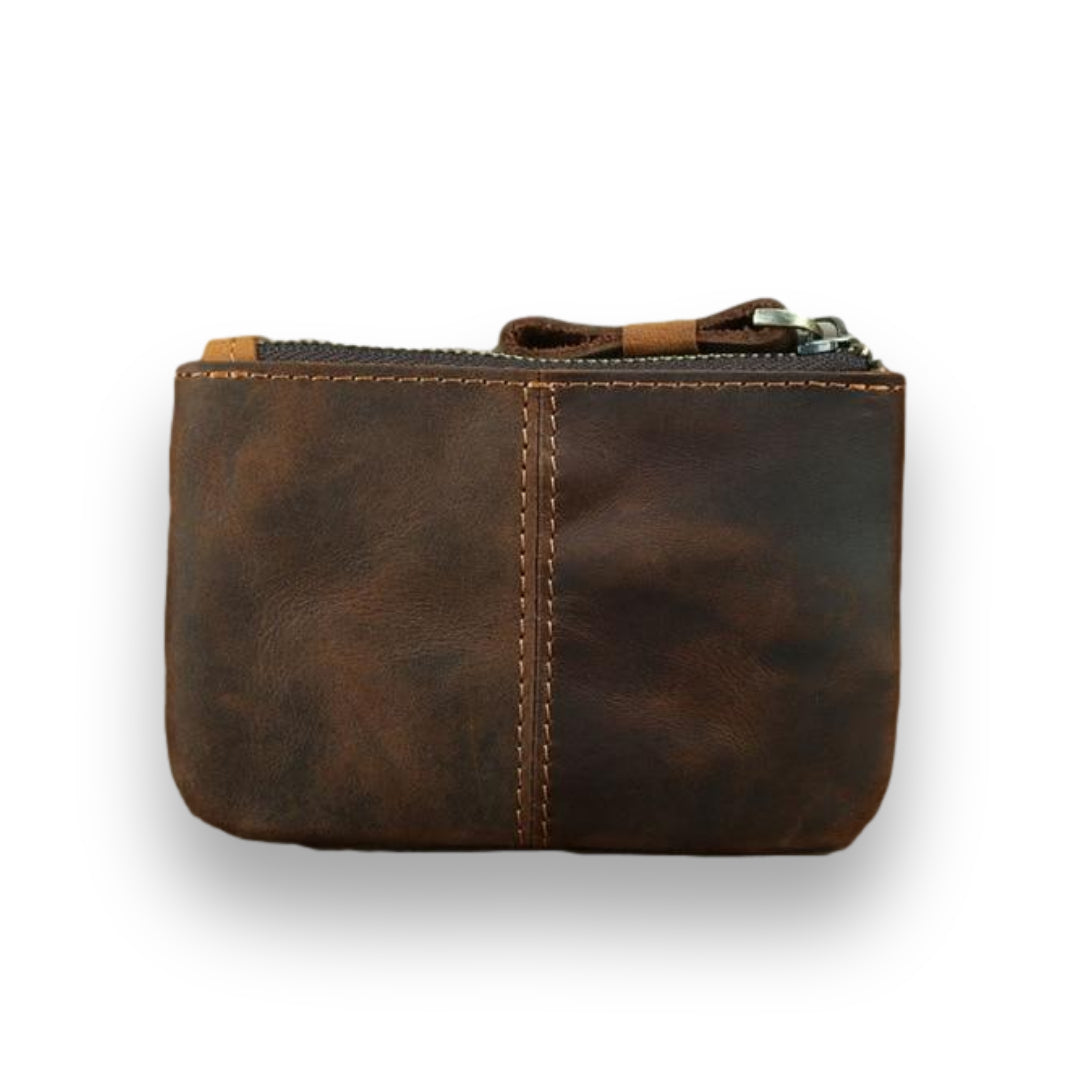Of course, we all know that leather has many different types. With each of these types comes varying strengths, durability, and overall quality. To name a few, there are full-grain leather, top-grain leather, and genuine leather. Knowing the different types of leather is important whenever you consider buying one. Knowing their different qualities will also make it easier to choose which to buy. In this article, we will be focusing on a very common type of leather. It is the type of leather that you see in most leather products in stores and malls. This leather can be on shoes, belts, and even wallets. They call this leather Genuine Leather. What is genuine leather and how is it different from other types of leather? What the advantages and disadvantages of genuine leather? Let us have a look!
Key Takeaways
- Genuine leather, while real leather, is of lower quality compared to full-grain and top-grain leather but offers an affordable alternative for leather products.
- The manufacturing process involves corrective treatments that affect the leather's natural qualities but create a uniform appearance.
- Price point is the main advantage of genuine leather, making leather products accessible to more consumers.
- Proper care and maintenance can extend the life of genuine leather products despite their lower quality.
- Understanding leather grades and types is crucial for making informed purchasing decisions and avoiding overpaying for lower-quality leather.
What Does "Genuine Leather" Really Mean?
You are at the department store, you take a look at a leather belt, leather shoes, leather furniture, leather sofa, or even a sleek-looking leather jacket. Taking a closer look, you see right on the leather it says "genuine leather" or "made with genuine leather". You look at the price and it's cheap too! Buying a genuine leather product sound like a great deal right? However, we are sorry to burst your bubble, but this leather is not the best of the best. Nor is it a great leather.
We do however want to set the record straight. If you are looking for real leather then you are on the right track. Genuine leather is indeed real leather. This means that the material comes from real animal skin or that there is some kind of leather in the material. While its quality comes nowhere near full-grain leather or top-grain leather, it is still from real animal skin.
Confused? Continue to read this article to know more about this fascinating leather.
How is Genuine Leather Made?
From the get-go, we must accept the fact that genuine leather is not as strong when comparing with full grain or top grain leather. While it does come from real animal hide, it does not come from the best parts of the hide. The reason lies behind or underneath the animal hide. The hide has many layers, each layer with different qualities. The strongest and toughest belong to the outermost layer of the skin. This is where the natural grain is. Oftentimes, the skin may be too tough and too thick to work with. Leather artisans, therefore, split the leather into layers. Of course, the outermost layer will still be the strongest and toughest. The layer underneath it is what we call "top-grain". And likewise what is beneath it will have lower quality like suede or nubuck.
Making genuine leather can be tricky. Most of the time it comes from split leather, usually from the intermediate layers. For example, are those between top grain and suede. However, any layer of the hide can be turned into genuine leather. That is what makes this type of leather unique.
These different layers and pieces of leather go through a correcting process or treatment. Usually because of imperfections on the outer layer of the skin. Hence why genuine leather is sometimes referred to as corrected leather.
This will give the leather a more uniform appearance. It usually goes through the process of sanding or buffing to remove any impurities. The leather is then dyed or spray painted to finish its look. This process however changes and alters many of the preferable qualities of leather. It is therefore the reason why it is inferior to full grain and top grain.
Quality of Genuine Leather
The good thing about this leather is that it is leather. Or to say it correctly, it is real leather. Real and genuine leather may sound the same but they have different meanings. Real means that it comes from animal skin. Genuine on the other hand refers to the type of leather.
Of the various types of leather, it is at the bottom of the list when it comes to quality. In comparison to full-grain leather and top grain leather, it is definitely an inferior product. It is not as strong nor as durable. Therefore its longevity is questionable. It is likewise not as strong against wear and tear. This leather however may give off a strong first impression because of its uniform leather appearance. However, if you are looking for high-quality and long-lasting leather, this is not the best choice.
The Appearance of Genuine Leather
Leather is not only great for its strength and durability. Many consider owning leather because of its great appearance. The appearance will depend on the type of leather. For example, top-grain leather has a refined and uniform look, like the leather we usually see. Full-grain leather on the other hand develops a beautiful appearance called the patina. While suede and nubuck have a fuzzy appearance, that is velvety to touch. What does genuine leather look like?
Perception vs Reality
Genuine leather will typically look like top grain leather. It will have a very uniform and smooth appearance. However, genuine leather may come in a variety of appearances depending on how it is manufactured. You can therefore say that this type of leather has no consistent appearance. It is therefore important to know how to identify what is genuine leather and what is not. Because while it looks like top grain leather, in reality, it is not. It is inferior in quality to what top grain leather looks like.
However, if you have no problems with quality then this type of leather is a great choice.
Uses and Applications

What Products is Genuine Leather Used For? Genuine leather has become a catch-all term for non-high grade leather. Amazingly there is a diversity of uses for this fascinating leather. Likewise, there is a wide selection of products that comes from this type of leather. From purses to shoes, leather bag, briefcases and, even belts, all of these may come from genuine leather. What all of these products have in common is the quality. Understandably, you won't find them in high-end leather retail stores. Rather you will commonly find them in department stores, malls, or stores that sell cheap shoes. However, the different uses of this type of leather are not just to shoes, bags, etc.
Advantages and Disadvantages
What are the Advantages of Genuine Leather?
To be fair, just because genuine leather is inferior does not mean it has no advantages of its own. In comparison to full-grain leather, top grain leather, suede, etc., there are quite a few areas that genuine leather shines. The best example would be on the price. Genuine leather is cheaper, it is affordable. When comparing it with other types of leather, especially with full-grain leather, a huge difference in price is clear.
Another advantage is how the leather looks and feels. For those who do not want to invest in high-quality, high-end leather but still have the same amazing leather aesthetic. It is also easy to care for and maintain. Although it does not last long, proper care will extend its life.
What are the Disadvantages of Genuine Leather?
Obviously, this type of leather belongs on the lower side of the list. In strength, durability, and overall quality, it is inferior. Likewise, time, different elements, and frequent use will wear and tear the leather down. You may notice that cracks and stretch marks will eventually appear.
The biggest disadvantage however does not come with the leather itself. Uninformed or uneducated consumers may easily be tricked into buying low-quality leather at a high price. This is not alarming since genuine leather and top grain leather look alike. It is, therefore, best to read on how to identify leather before dishonest sellers overcharge you for it.
Understanding Leather Grades and Types
Different types of leather over different characteristics. Whether on strength, durability, toughness, appearance, texture, etc. They are often graded according to their quality. Understanding the different grades of leather is important especially when you consider buying one for yourself.
How is Leather Graded?
Grading typically starts with the rawhide or animal skin. The grading will depend on the quality of the animal skin and how it has been split. This is important especially for tanneries who process the skin into leather. Knowing exactly the quality of leather that they are receiving and working with is important for consistency in quality.
There are usually inspectors who grade the rawhides. They particularly look for imperfections on the skin. Imperfections such as holes, deep cuts, scars, large abrasions, and discoloration. They will also look at any machine damage from skinning the process or any remaining hair on the skin. Grain inconsistencies are also a factor in grading.
Surface treatment and how the tanning process goes is also a factor in grading. For example, whether or not the skin has gone through sanding or buffing. Or whether the skin goes through vegetable tanning or chromium tanning or aniline leather. Conclusively, the leather is graded after the final product is presented and this creates the various leather grades.
Types of Leather
|
Type of Leather |
Description |
|---|---|
|
Full-Grain Leather |
The highest quality leather, containing the outer layer of the hide with strong fibers. It is durable, tough, and full of imperfections due to the lack of sanding or buffing. Develops a patina, giving a vintage leather look. |
|
Top-Grain Leather |
Similar to full-grain but with the top layer sanded or buffed to remove imperfections. Less durable and weaker than full-grain but softer and more visually appealing with a uniform appearance. |
|
Bonded Leather |
Made from shredded leather scraps and fibers bonded together. Sometimes mixed with real and fake leather. Often called reconstituted, blended, or split-grain leather. Less durable and of lower quality. |
|
Corrected Grain Leather |
Animal skin that is sanded or buffed to remove imperfections such as scars and blemishes. Stamped with an artificial grain for a more refined appearance. Often considered similar to genuine leather. |
|
Patent Leather |
Shiny and smooth leather made through a finishing process. Its glossy surface gives it a refined look. Often used for products requiring precision, like shoes and watches. |
|
PU Leather |
Polyurethane leather is synthetic and does not come from animals. It mimics real leather but is less durable. Marketed as Vegan Leather due to its cruelty-free production process. |
Different types of leather give us different qualities of leather. Here are a few of the different types of leather.
Full-grain leather
Most consider full-grain at the highest quality leather. This type of leather contains the outer layer of the hide or as many refer to as the "grain". The grain contains most of the strong fibers of the animal skin. This is therefore the reason why full-grain is strong and durable because of the fibers. It does however make the leather tough. Moreover, full-grain is full of imperfection because of the grain. These imperfections however are deliberate since full-grain does not go through the sanding or buffing process. It does develop a patina which gives off that vintage leather look.
Top-grain leather
Top-grain is similar to the full-grain except for the top layer of the skin that goes through sanding or buffing to remove any imperfections. Removing the grain will also affect the overall quality of the leather. It is less durable and weaker than full-grain but is still high-quality leather. Moreover, top-grain has a more refined look in comparison to full grain. It is therefore more visually appealing since has a uniform appearance. It is also softer than full-grain because the grain is out of the picture.
Bonded leather
Bonded leather a mix of different kinds of leather that are attached to each other. The materials are often from shredded leather scraps and leather fibers. They are held together by bonding materials that unify them into a singular fabric. Bonded leather is sometimes a mix of real leather and fake leather. Many call it reconstituted leather because it comes from scraps. Sometimes referred to as blended or split grain leather as well.
Corrected Grain Leather
This type of leather is very similar if not the same to genuine leather. In that, the animal skin goes through the same correcting process of sanding or buffing. The sanded layer is then given an artificial grain to make it appear genuine.
Moreover, it got its name because of the process which is to correct any imperfections on the bare skin. Imperfections such as scars, bug bites, and blemishes. Removing that layer means to correct the leather thus its name. It is then stamped with a fake grain.
Patent Leather
Bonded leather a mix of different kinds of leather that are attached to each other. The materials are often from shredded leather scraps and leather fibers. They are held together by bonding materials that unify them into a singular fabric. Bonded leather is sometimes a mix of real leather and fake leather. Many call it reconstituted leather because it comes from scraps. Sometimes referred to as blended leather as well.
PU Leather
PU leather or Polyurethane leather is fake leather. It does not come from animal skin but an imitation of it. It has often had a leather look but sometimes has a synthetic feel to it. PU leather is also not as strong nor as durable as real leather. However, it does have the advantage of not involving any animals in the process. It is often marketed as Vegan Leather.
Making Informed Purchasing Decisions
Price vs. Quality - Full Grain Leather or Genuine Leather?
In buying leather there is always this common dilemma. Risk a lower quality leather for a cheaper and more affordable price or buy a higher quality leather for a much steeper price. There is always the temptation to buy something cheaper and affordable, especially when leather looks high-end. However, taking a risk on quality for the price might not always be the best decision. Investing in very expensive leather is not always wise either. While great quality, such as strength and durability can be great selling points, prices often discourage buyers.
Ultimately, you will ask yourself one question: "is it worth it?"
Make an Informed Decision
Many consider purchasing leather as an investment, and there will always be risks. That is why it is important to make an informed decision before buying one. To make the most out of your purchase it is important to know what you are looking for. There are many things to consider whenever you buy leather. First should be the price. Of course, you can spend daydreaming of the highest quality but you cannot even afford it. Look for the types of leather that are within your range.
Next, is to look for the type that you want. Always consider the risk of quality and price. It is also important to know how to identify the different types of leather. Mostly to avoid any scams or overcharging. There are many ways to identify leather, the most common way is to use your sense. Have a look at the leather, feel it, and even take a whiff at it. You may also check the label whether it is made with genuine leather or polyurethane.
Care and Maintenance
How To Care For Genuine Leather
Knowing how to take care of leather is very important. Whether you have high-quality full grain or top grain leather or low-quality genuine leather you need to take care of it. Proper care and maintenance will not only keep the leather clean but extend its life. This is true even for low-quality leather. And because it is susceptible to wear and tear, proper care and maintenance are very important.
Luckily genuine leather is very easy to clean and maintain. Giving the leather a fair chance to extend its life. Cleaning it simply requires a damp cloth to wipe down any dust, dirt, and grime. Because it is so easy to clean and maintain you can also do it regularly, especially when you are in a dusty area. No matter how easy it is to clean always wipe it down gently to avoid damaging the leather. It is also important to remember to use a damp cloth. Do not use a wet cloth and do not submerge it in water. Make sure to wipe it dry afterward.
Another way to take care of genuine leather is to polish it. Polishing it moisturizes the leather to keep it from drying and cracking. You can also apply leather conditioners or creams to your genuine leather. Conditioners nourish the leather and also prevent it from cracking or drying out. Unlike leather polish, leather conditioners will not give the leather a shine. However, it will give your leather more protection.
How to Repair Damaged Genuine Leather
Repairing damaged genuine leather can be a rewarding process, especially when you see how a little effort can restore its original beauty. The first step is to thoroughly clean the affected area with a mild soap solution, ensuring that any dirt or grime are removed. Once dry, assess the type of damage you are dealing with—be it scratches, scuffs, or tears. For minor scratches, applying a leather conditioner can help hydrate the material and reduce the visibility of these imperfections.
In cases of deeper scratches or cuts, using a leather repair kit is advisable; these kits typically contain adhesive, color matching compounds, and fine tools for blending repairs seamlessly into the leather. Always remember to test any products on a hidden section first to ensure compatibility. Lastly, after completing repairs, applying a protective leather cream can help shield against future damage, keeping your genuine leather looking stunning for years to come.
Protecting Genuine Leather from Sunlight and Heat
Understanding the various types of leather and their proper care is essential for maintaining leather products. Real leather and genuine leather, including full-grain leather and top-grain leather, require specific attention to preserve their natural properties and exceptional durability. Protecting these high-quality leather items from sunlight and heat is crucial to ensure their longevity and aesthetic appeal. The natural grain patterns and authentic leather characteristics can be compromised when exposed to harsh conditions.
Prolonged exposure to direct sunlight can cause the leather to fade, dry out, and ultimately crack, affecting its appearance over time. To shield your leather items, such as leather furniture, leather jackets, and leather bags, consider placing them in shaded areas or using protective covers when not in use. This straightforward technique helps maintain the consistent appearance and superior quality of the material.
Additionally, it's important to maintain a stable room temperature to prevent extreme fluctuations that could damage the material. The outer layer of genuine cowhide leather is particularly susceptible to environmental consequences. Using a leather conditioner and leather polish periodically can help in maintaining flexibility and moisture, providing a barrier against drying effects. Clean the surface with a damp cloth regularly to maintain its smooth texture and natural grain.
By taking these simple steps in the proper care of your leather products, you can preserve their quality and develop a beautiful leather patina over time. Whether you're caring for dress shoes, utility belts, or a leather handbag, these maintenance practices will help ensure your genuine leather products maintain their attractive appearance for years to come.
Frequently Asked Questions
What Is Genuine Leather?
Genuine leather is real leather made from animal hide, typically from the intermediate layers of the skin. While it is authentic leather, it's considered a lower grade compared to full-grain and top-grain leather, often made from split leather and treated with various corrective processes.
How Does Genuine Leather Compare To Other Types?
Genuine leather is at the lower end of the leather quality spectrum. While it's real leather, it's inferior to full-grain and top-grain leather in terms of durability, strength, and longevity. However, it's more affordable and still provides the aesthetic appeal of leather.
How Is Genuine Leather Made?
Genuine leather is made from split leather layers, usually from intermediate sections of the hide. It undergoes corrective processes including sanding, buffing, and dying to achieve a uniform appearance and remove imperfections.
How Should I Care For Genuine Leather?
Care for genuine leather by regularly wiping it with a damp cloth to remove dirt and dust. Use leather conditioners or creams to prevent drying and cracking. Avoid submerging in water and always dry thoroughly after cleaning.
What Are The Main Uses Of Genuine Leather?
Genuine leather is commonly used in various everyday products including shoes, belts, wallets, purses, and briefcases. It's typically found in department stores and mall retailers rather than high-end leather shops.
Conclusion
While genuine leather may not offer the premium quality of full-grain or top-grain leather, it serves as a practical and affordable option for consumers seeking leather products. By understanding its characteristics, limitations, and proper care requirements, buyers can make informed decisions and maintain their genuine leather items effectively. The key is to align expectations with the product's quality level and price point, ensuring satisfaction with the purchase.



























